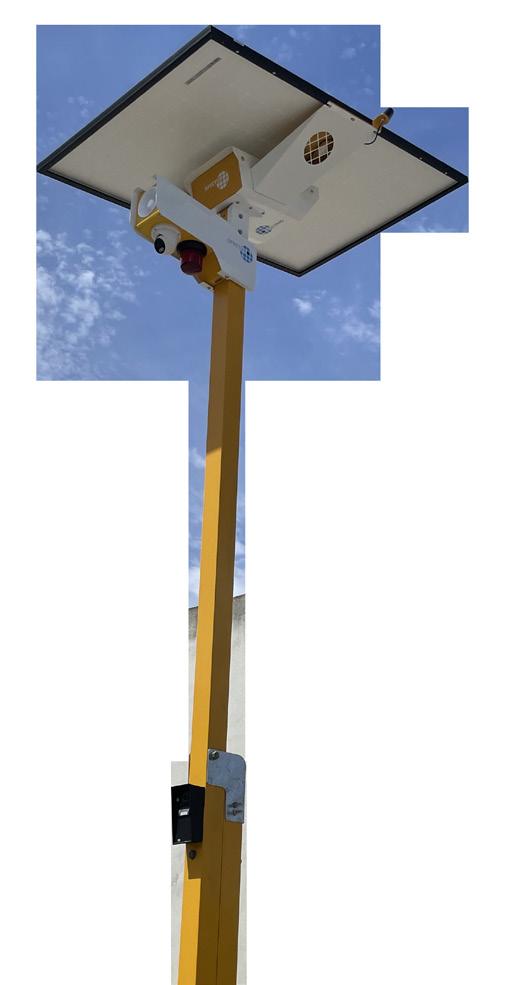
Keeping council coffers stable



Keeping council coffers stable

While traditional trade publications have quality audiences and high levels of trust, they can lack the full range of services to guarantee a return on your investment. And while traditional marketing agencies offer the latest marketing techniques, they don’t have the audience or the industry understanding the B2B sector needs.
Monkey Media is the missing link that brings together a trusted brand and powerful audience, with a complete agency offering.

Published by
Monkey Media Enterprises
ABN: 36 426 734 954
C/- The Commons, 36–38 Gipps St
Collingwood VIC 3066
P: (03) 9988 4950 monkeymedia.com.au info@monkeymedia.com.au councilmagazine.com.au news@councilmagazine.com.au
Editor
April Shepherd
Assistant Editor
Stephanie Nestor
Journalists
Tess Macallan, Steph Barker, Kody Cook, Sarah MacNamara
National Media Executives
Rima Munafo, Brett Thompson, Ryan Sheehan
Design Manager
Alejandro Molano
Designers
Danielle Harris, Jacqueline Buckmaster
Marketing Manager
Radhika Sud
Marketing Associates
Rhys Dawes, Bella Predika, Georgia Rogers
Digital Marketing Assistant
Emily Gray
Publisher
Chris Bland
Managing Editor
Laura Harvey
ISSN: 2653-2670
Autumn; a breath of fresh air for many of us, and although it symbolises the end of summer and colder times ahead, it is also the time to pause and reflect following a huge 2023, and a busy start to 2024.
One of the biggest issues I’ve noticed from the start of this year is the ongoing housing crisis which continues to plague our country. We’ve seen a number of new initiatives announced aimed at delivering new, affordable housing to our communities; and councillors around the country are continuing to put pressure on state and federal governments to ensure adequate housing support is provided.


Aquatic and Recreation Centre and the Blacktown Exercise, Sports and Technology Hub.
It’s critical that more housing is delivered in communities, but it’s also critical that this new housing is delivered in a sustainable manner, and that is a core theme running through this issue of Council
We have features looking at climateready plant selection in communities, and the impact this has on urban resilience; the importance of sustainable design in council assets; the role of ecotourism in our regions; and also, insights into the importance of ensuring financial stability in local government.
It’s also vitally important that communities have access to facilities where they can enjoy leisure activities, exercise and connect with fellow residents; and in this issue, we highlight three such facilities: the Aqua Energy Leisure Centre in Sale, the Cockburn
In some personal news, this is my last issue as Editor of Council Magazine. My first issue as Editor was Autumn 2022, so it seems fitting that exactly two years later I am passing my baby to someone else. It has been an absolute pleasure getting to know this sector, and the big and small communities that work tirelessly to create safe, sustainable communities and foster a sense of belonging. What a unique gift it has been to learn so much about my country.
I leave the magazine in the very capable hands of our Managing Editor, Laura Harvey, who taught me everything I know about editing in the B2B space, and my Assistant Editor, Stephanie Nestor, with both having the passion for community that has always been at the core of Council Magazine’s ethos.
Wishing you all the best in 2024 and beyond.
April Shepherd EditorIf you have a story idea, tip or feedback regarding Council, I’d love to hear it. Drop me a line at laura.harvey@monkeymedia.com.au, and don’t forget to follow us on social media – find us on LinkedIn, Twitter or Facebook.
This
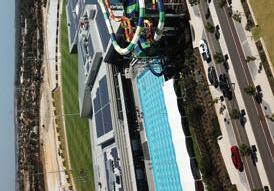

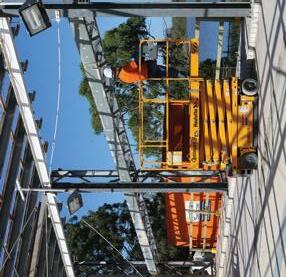

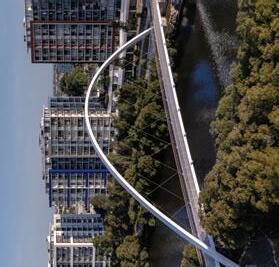
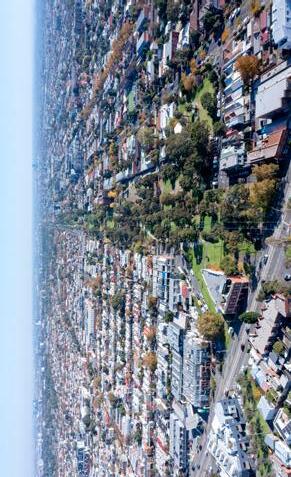
12
ENSURING THE ONGOING FINANCIAL STABILITY OF COUNCILS
Melbourne’s Yarra City Council has recently developed and launched its Financial Sustainability Strategy, designed to guide Council on how to best manage resources for the long-term in the best interests of the community. Here, we outline the key elements of the strategy for other councils looking to develop similar initiatives.
14 LOCAL GOVERNMENT REFORMS: RESTORING CONFIDENCE IN ELECTED OFFICIALS
18 CONNECTION ACROSS THE RIVER: PARRAMATTA’S NEW DIAGONAL ARCH BRIDGE
A striking new gateway into the City of Parramatta is now complete with the Alfred Street Bridge open to the public, forming an important part in a growing network of active transport links to make the City easier to navigate for pedestrians and bike riders.
22 CHEERS TO PRESERVING HISTORY THROUGH GOOD DESIGN
26 THE FOREFRONT OF INNOVATION IN STORMWATER DRAINAGE SOLUTIONS
28 COUNCILS STEPPING UP TO ADDRESS THE HOUSING CRISIS
32 GIVING COUNCILS CHOICE WITH BATTERY STORAGE
34 HJ WEAVER DEVELOPMENT PROGRAM: SUCCESS SHAPED BY PEOPLE
36 TAKING THE ENVIRONMENTAL IMPACT OUT OF DRAINAGE REPAIRS
CIVIL CONSTRUCTION SUSTAINABILITY
38 BUYING NOTHING FOR CIRCULARITY AND COMMUNITY WELLBEING
42
CLIMATE-READY PLANT SELECTION FOR RESILIENT URBAN FORESTS
Which Plant Where is a web-based plant selection tool that helps users find the right plants for the right location. It is the world’s first plant database to use powerful climatic modelling for future climate scenarios to guide plant selection and it is an essential tool for urban green space managers in local government and residents to find the right plants that will survive and thrive both now and decades into the future.
46
48
SETTING THE STANDARD: MAXIMISING COMMUNITY ASSETS WITH SUSTAINABLE DESIGN
GLOBAL RECOGNITION FOR EAST GIPPSLAND’S SUSTAINABLE TOURISM
Providing professional diversity and inclusion training, podcast production and opportunities for on-air sponsorship, Australia’s LGBTQIA+ community broadcaster JOY Media is working towards a more inclusive Australia. As part of the organisation’s remit, JOY Media works directly with councils around Australia to support constituents, team members, and stakeholders to be more inclusive.
HEALTH AND SAFETY
52 PRIORITISING BETTER MENTAL HEALTH AT WORK
The average person will spend a third of their lives at work. While our jobs can provide a sense of purpose, fulfilment and opportunities for growth, they can also present challenges that negatively impact our mental health. From demanding workloads to organisational stressors, the risks of experiencing mental health issues are ever-present.
54 MEETING THE CHALLENGES OF AGED CARE IN MOUNT ALEXANDER SHIRE
As the number of Australians aged 65 and over is projected to double over the next 40 years, communities will likely experience growing demand for in-home aged care services. However, with the Federal Government’s plans to reform in-home aged care funding, many Australian councils are putting such programs on the chopping block. Mount Alexander Shire Council is among the exceptions, having voted last year to maintain its commitment to provide services to over 900 of its residents.
58
60
COCKBURN RECREATION CENTRE: HOW ACTIVE MEMBERS SAVED THE COMMUNITY $30 MILLION
DESIGNING COMMUNITY LEISURE CENTRES FOR OUR CHANGING NEEDS
MAPPING, GIS & SURVEYING
64 MINECRAFT ALLOWS CITY OF LAUNCESTON TO CONNECT WITH KIDS
The City of Launceston has expanded its engagement to a whole new audience thanks to the universally popular video game Minecraft. By developing downloadable Minecraft maps of Launceston, Council has been able to engage with a community group traditionally difficult to interact with and gain insights from – children.
01 EDITOR’S WELCOME
04 A WORD FROM THE AUSTRALIAN LOCAL GOVERNMENT ASSOCIATION
72 ADVERTISERS’ INDEX
72 EDITORIAL SCHEDULE
05 NEW GUIDE TO SUPPORT DEVELOPMENT OF ALL-ELECTRIC PRECINCTS
06 RESEARCH TO SUPPORT WOMEN IN LOCAL GOVERNMENT
07 COUNCIL RESPONDS TO RISING CASES OF STAFF ABUSE
07 FUNDING TO SUPPORT WA COUNCILS SHIFTING TO EVS
08 NSW COST SHIFTING AFFECTING RATEPAYERS, REPORT FINDS
09 NEW GUIDE HELPING CONSUMERS INVEST IN ROOFTOP SOLAR
10 REGIONAL MAYORS CALL FOR ACTION ON HOUSING CRISIS
COUNCIL IN FOCUS
68 PERTH: SHINING BRIGHTER THAN EVER

In each edition of Council Magazine we choose one local government from across Australia to shine a spotlight on. This edition, we focus on the City of Perth and its vibrant nightlife that is bringing together culture, history, entertainment and community under the banner of ‘the City of Light’.
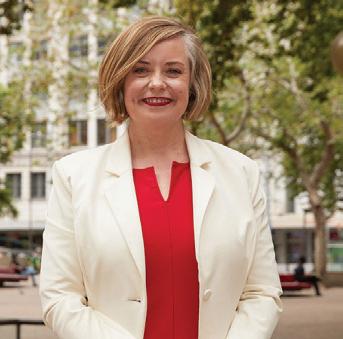
Australia is in the midst of a cost-of-living crisis, as the rising costs of housing, food, transport and utilities are all being felt by households across the country.
As the closest government to communities, councils are stepping up to provide relief, providing free and low-cost services and programs through libraries and community centres, as well as direct support to vulnerable residents.
However, we can’t continue to provide these extra services without sustainable funding, and that’s why we are calling on the Federal Government to honour its commitment of delivering “fair increases” to federal Financial Assistance Grants.
In the lead up to the 2022 election, Federal Labor committed to supporting the “long-term financial sustainability of local government” through increases to grant allocations, including “fair increases” to Financial Assistance Grants.
But unfortunately, almost two years later, councils are still waiting!
Our number one focus in the May Budget is restoring Financial Assistance Grants to at least one per cent of Commonwealth taxation revenue, and I recently met with the Treasurer, senior Government Ministers, Shadow Ministers and independents in Canberra to highlight this urgent need for more support.
Disappointingly, FA Grants have declined from one per cent of Commonwealth taxation revenue in 1996 to just 0.5 per cent today.
Our research shows local governments’ share of Gross Domestic Product is amongst the lowest of comparable nations, and expenditure per capita by councils has flatlined over the past decade, while state, territory and commonwealth spending continues to rise.
Restoring untied Financial Assistance Grants to at least one per cent of Commonwealth taxation revenue must be an urgent priority for this Government and would deliver tangible benefits for every Australian community.
We are also asking for a once-off $3 billion payment to councils to address the historical practice of paying FA Grants in the previous financial year.
For 15 years councils have received these advance payments as economic stimulus to address the impacts of COVID, natural disasters, and the Global Financial Crisis.
However, many local governments are playing a constant game of catch-up on the $3 billion worth of funds and we need to reset the payment cycle.
Providing an additional once-off allocation of Financial Assistance Grants equal to one year’s payments will address the bring-forward and meet the Government’s commitment to fair increases.
Another key issue on ALGA’s agenda is empowering councils to effectively address the nation’s housing crisis.
We are advocating for the Government’s new Housing Support Program to be increased from $500 million to $750 million to invest in the local infrastructure necessary for healthy and connected communities.
We simply can’t build more houses – we also need to create more parks, libraries, playgrounds, recreation centres and swimming pools – to create more liveable communities.
We are committed to working with the Government on its housing ambitious targets, but it’s crucial residents in new developments have access to the same health, employment, education and recreation opportunities that many people take for granted.
Finally, other priorities on our 2024-25 Budget wish list include funding for disaster recovery, emissions reduction, waste management, climate change adaptation and improving community infrastructure.
Councils have a key role to play in building a stronger and more resilient nation and we look forward to working with the Commonwealth, and our state and territory governments, to deliver place-based solutions across the country.
The Green Building Council of Australia (GBCA) has released a new guide – The future is electric: A practical guide for grid-optimised precincts – to assist Australia on its journey towards a fully renewable national electricity grid.
GBCA CEO, Davina Rooney, said that precincts are playing an increasing role in how Australians live, work and play, and need to be future proofed so they can last for generations to come.
“Every new precinct can be built to be all-electric today using technologies that are proven, efficient and available and doing so is an essential step towards zero carbon, lower energy bills, and adhering to changing government regulations,” Ms Rooney said.
The practical guide is designed to help developers, governments, building owners, investors, and residents to plan and best utilise all-electric precincts.
It discusses current technology options, and how to prepare for the transition to electric vehicles, energy storage and a more dynamic renewable electricity grid.
This guide discusses how new precincts can be designed to support:
Transitioning to all-electric buildings and precincts, especially those powered by renewable energy, has emerged as the most viable strategy for reducing carbon emissions within the built environment. As the electricity grid becomes greener, any new development relying on gas will produce significantly more emissions than a comparable all-electric project.
Grid interactive precincts can assist in smoothing the transition to a fully renewable national electricity grid by reducing electricity consumption, minimising peak demand, shifting the time of day that electricity is imported from the grid, and utilising electricity when it is in abundance and at its cheapest.
As the revolution in electric vehicles gains momentum in Australia, precincts (not petrol stations) will be where most vehicles are charged. Amendments to the National Construction Code now require provisions for batteries and electric vehicle charging facilities in certain building categories.
For precinct operators, building owners, and tenants, all-electric models present opportunities to lower energy expenses, shield themselves from the fluctuations of global energy markets and geopolitical unrest, and avoid the costs associated with maintaining an increasingly obsolete gas infrastructure.
For precinct operators, building owners, and tenants, all-electric models present opportunities to lower energy expenses, shield themselves from the fluctuations of global energy markets and geopolitical unrest, and avoid the costs associated with maintaining an increasingly obsolete gas infrastructure.
“The age of gas use in our precincts is coming to an end. Electrification not
only minimises carbon footprints, but also offers superior financial outcomes,” Ms Rooney said.
“Preparing precincts for an all-electric future is also crucial as government policies increasingly begin to revoke previous mandates for gas infrastructure installation.
“We’re also seeing shifting consumer sentiment in this space, with more people becoming aware of the health and environmental benefits of allelectric.”
Boundless (funding partner for the guide) Head of Philanthropy, Dan Pediaditis, said that the guide was a necessary next step for the built environment to do its part in combating climate change.
“The mission to avert the climate crisis is requiring big, technical thinking across many different industries and that is no less true in the building industry,” Mr Pediaditis said.
“The way that electricity is generated and used is changing rapidly and the built environment needs to be able to respond with proper guidance, planning and management.
“This guide sets a very clear road map across the life cycle of a precinct to ensure all stakeholders are working effectively towards a common goal. By electrifying precincts properly from the beginning, we will see huge environmental and financial benefits for many generations to come.”
This guide builds on x 2022 roadmap to decarbonise Australia’s precincts, which set a net zero goal for new precincts by 2030, and existing precincts by 2050.
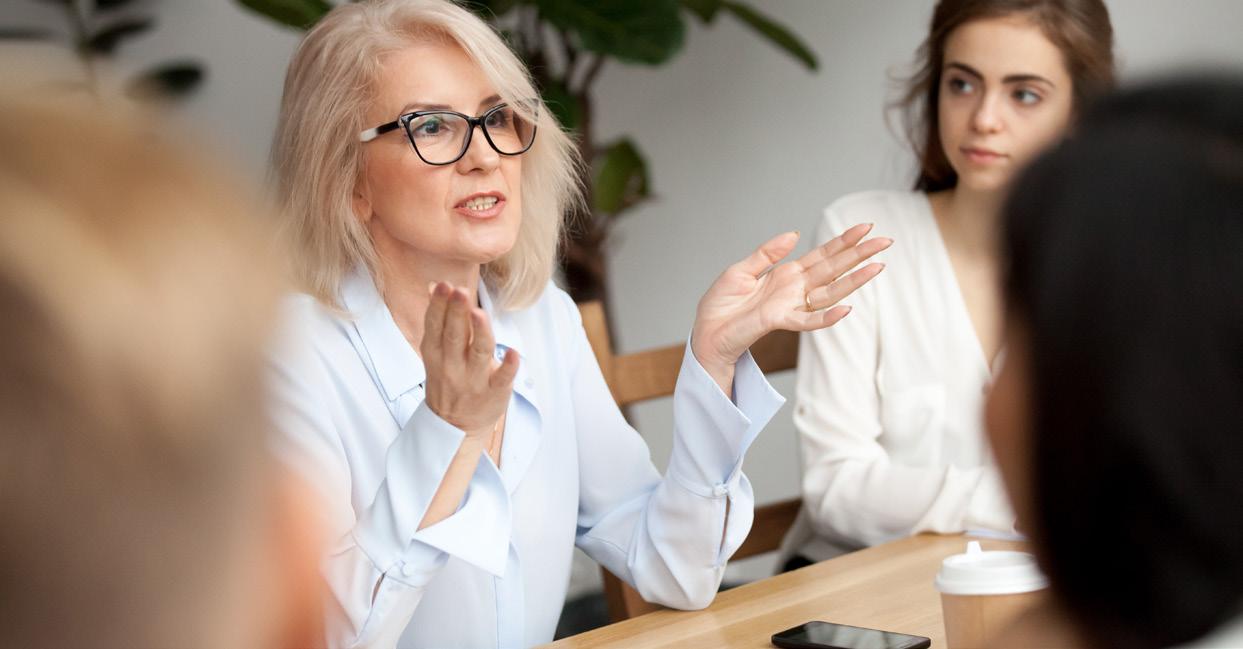
The Victorian Local Government Association (VLGA) is working with researchers from multiple universities to develop Australian-first research on the experiences of women councillors in local government.
Part of a multi-year Australian Research Council (ARC) partnership agreement between the VLGA, La Trobe University and Melbourne University, this research has followed women and men councillors across their 2020-2024 term, assessing their trajectories, their representation and barriers to success and longevity in local government.
Over the past four years, the research has listened to the family demands, role strain and experiences with trolling and harassment of councillors, as well as their overall satisfaction with the elected official role.
A number of research articles have been produced on this research to date, with The Missing Cohort: Women in Local Government highlighting a lack of engagement by younger women in local politics, and From Online Trolls to ‘Slut Shaming’ which identified women councillors are experiencing a range of gender-based harassment and incivilities at significantly higher rates than their male counterparts.
This latest report, Breaking Barriers, focuses on in-depth interviews with women councillors across regional and metropolitan Victoria, to better understand women’s experiences and barriers to participation across a range of local government settings.
The research shows women in local government are burning-out as they try to juggle the demands of work, family and politics. This strain is making it hard to close the gender gap within local councils as women are choosing not to recontest nor stand for an elected position, as the needs of their family outweigh those of the time needed to engage in local politics.
This fourth and final year of the project will align with local government elections in October. The VLGA has called for the Victorian Government to adopt the research recommendations and invest in specific and targeted resources for women councillors, if there is to be a significant influence on the State Government’s target of hitting 50-50 gender representation at a local level by 2025.
The report was formally launched by Professors Andrea Carson and Leah Ruppanner on 6 March at the Lyceum Club in Melbourne, hosted by the VLGA and ALGWA Victoria and chaired by gender equality champion, and Co-Founder and CEO of Gender Lens Australia, Tanja Kovac.
VLGA CEO, Kathryn Arndt, said that the VLGA is proud to be a part of this Australian-first research which carefully listens to women councillors and uses their lived experiences to form considered recommendations that improve the working lives of women across the sector.
“The research shows, if we want to see women succeed in these essential roles, they must have appropriate support mechanisms and funded programs in place to guide them through the pathways to local office,” Ms Arndt said.
La Trobe University Professor, Andrea Carson, said that women’s representation in all levels of government is critical.
“Decades of research shows we can create a more equal society that benefits us all if we have more equal parliaments,” Prof Carson said.
“What we need now is fresh thinking and policies from the Victorian Government that deliver women the resources they need to be empowered and engaged in their elected roles.”
Australian Local Government Women’s Association President, Kylie Spears, said that women bring unique strengths to politics, yet are underrepresented across all local, state and federal governments.
“This research shows we need a cultural shift to support women to stay in their elected roles, namely practical additional resources like childcare and flexible meeting times, which recognise the distinctive demands impacting women,” Ms Spears said.
Commission for Gender Equality in the Public Sector Commissioner, Dr Niki Vincent, said that tailored initiatives that empower women to engage in local government are vital in order to see women step forward for election who are representative of Australia’s diverse communities.
“We must be promoting and championing local council activities that support women’s participation in local government.”
The violent assault of a Parks employee working on the Hervey Bay Esplanade in early February has prompted the Fraser Coast Regional Council CEO to call on the community to put a stop to the abuse of council staff.
Council CEO, Ken Diehm, said there had been a recent spate of incidents of physical, verbal and online abuse of Council staff, with the Esplanade assault the most extreme example.
“As a Council, we are committed to providing positive customer experiences and delivering the services our growing community needs,” Mr Diehm said.
“We acknowledge the right of individuals to provide feedback about Council services and decisions, both positive and negative, and to lodge an official complaint if they wish.
“However, our employees shouldn’t be getting abused simply because they work for Council. Our staff are members of the community too and they deserve to be treated with respect.”
Mr Diehm said that while the vast majority of Council staff’s interactions with customers were positive, he was hearing and seeing more and more examples of staff being subjected to verbal and online abuse.
“It is just appalling that Council staff are being yelled at, threatened and physically and verbally abused when trying to do their jobs, while both frontline and senior officers are being tagged and targeted personally on social media with threats and abuse.
“Enough is enough. Everyone has the right to feel safe at work, and Council will take all necessary action, including legal action, to protect our employees.”
In June 2021, a local resident was fined $300 in the Hervey Bay Magistrates Court for a “persistent attack” of verbal abuse and threatening behaviour towards a Council community ranger, while in December 2020, a resident was fined $750 for threatening a ranger.
The Western Australian Local Government Association (WALGA) will coordinate the delivery of 129 light battery electric vehicles and required charging infrastructure with the help of $3.5 million from ARENA.
This project is a first of its kind to bring together the buying power of local governments to reduce costs associated with transition to EVs and ensure knowledge sharing across the sector.
WALGA President, Karen Chappel, welcomed the funding announcement, acknowledging both the ARENA funding and that from the State Government of Western Australia.
“This project shows what is possible when Federal and State Government, local governments, and WALGA work together,” Cr Chappel said.
“This project, through aggregating procurement, will accelerate our local governments being able to transition their fleets to battery electric vehicles, providing cost effective solutions.
“For non-metropolitan local governments, this project is particularly important as the funding of power infrastructure upgrades will allow them to short circuit what would otherwise have been a difficult process.”
The 22 local governments who are part of this first initiative will provide key learnings as WALGA looks to work with all councils to assist with fleet transition across Western Australia.
These local governments are the City of Armadale, Shire of Augusta-Margaret River, Shire of Boddington, Town of Cambridge, City of Canning, Shire of Capel, Shire of Denmark, Eastern Metropolitan Regional Council, City of Fremantle, City of Gosnells, Shire of Harvey, City of Joondalup, City of Kalamunda, City of Melville, Shire of Mundaring, Shire of Northam, City of Perth, Shire of Ravensthorpe, City of Rockingham, City of Stirling, City of Subiaco and Town of Victoria Park.
This program implementation is commencing immediately, with WALGA working with local government to fast track the installation of charging infrastructure.
“This is a new era in powering local government fleets into the future.”


Areport has found that ratepayers on the Northern Beaches were out of pocket $39 million in the 2021-22 financial year – or $379 per ratepayer –which it attributed to cost shifting from the New South Wales Government.
The figures are derived using the methodology from the latest cost shifting report produced by independent consultants, Morrison Low on behalf of Local Government New South Wales (LGNSW) for the 2021-22 financial year which calculated an amount of $1.36 billion in costs has been passed on to councils across New South Wales.
This is an increase of $540 million since the last report from the 2017-18 financial year.
The Cost Shifting Report reveals Northern Beaches Council paid the highest Emergency Services Levy in 2021-22 at $6.4 million ($62 per ratepayer), which is 28 per cent more than the next highest Council (Central Coast Council at $5 million). Council’s Emergency Services Levy has increased
to $9.3 million in the 2023-24 financial year, equivalent to $90 per ratepayer.
Northern Beaches Council has said that it will write to the New South Wales Premier, Treasurer and Minister for Local Government requesting that they urgently seek to address the costs through a combination of regulatory reform, budgetary provision and appropriate funding.
Northern Beaches Council Mayor, Sue Heins, said that increasing cost shifting puts a huge burden on the financial stability of local government.
“Every dollar we pay in levies and subsidies to the State Government, is one less dollar we can put into our local roads and footpaths, our parks and community centres or our libraries and events programs,” Mayor Heins said.
“Put simply, it constrains our ability to maintain our community
infrastructure and sustain the same level of service to our community. Our Asset Management Plan (2022-2032) identifies an infrastructure funding gap of $151 million over ten years.
“This is further exacerbated by recent high inflation and the $3.1 million increase in costs to Council associated with the Emergency Services Levy this financial year.
“Our community deserves better and this must stop.
“I encourage the government to consider how this cost shifting is resulting in lost services, lost opportunity and lost amenity for New South Wales residents and businesses and do something to fix it.”

The Federal Government has released the Solar Consumer Guide, which is designed to inform Australians about the potential benefits of rooftop solar with the help of consumer solar and battery calculator, SunSPOT.
The Federal Government is encouraging councils across Australia to share these free, independent resources with their ratepayers to help them invest in rooftop solar.
The Solar Consumer Guide is for householders and small businesses and was developed with the assistance of industry stakeholders and solar experts
from the Australian PV Institute and UNSW – the same team that produced the SunSPOT solar and battery calculator.
The Solar Consumer Guide provides step-by-step independent advice to help households and small businesses get the most out of rooftop solar and batteries, and make confident and informed decisions.
The Solar Consumer Guide helps with:
∞ Finding out what solar system size you need, and the cost and savings to be made (using SunSPOT)
∞ Finding rebates you’re eligible for

REGISTER NOW apsacc.com.au
Australia’s leading event in anti‑corruption, the Australian Public Sector Anti‑Corruption Conference 2024, held this year in Darwin NT, APSACC 2024 brings together Australian and international anti‑corruption experts to speak on risk identification and management, emerging trends and innovative approaches to combat corruption.
Featuring optional preconference workshops on
29 July 2024, APSACC 2024 includes keynote speakers, presentations and discussion panels on 30 and 31 July 2024.
APSACC 2024 is hosted by the Office of the Independent Commissioner Against Corruption (NT).
∞ Explaining how solar makes savings on bills
∞ The basics of solar technology
∞ Options for the solar system’s design
∞ How to find a reputable solar company
∞ What details to look for in the quote, and questions to ask the company
∞ What to do in the event a problem arises
With tailored estimates from SunSPOT and helpful advice from the Solar Consumer Guide, consumers can feel more confident about buying the right solar system for their needs.
AUSTRALIAN PUBLIC SECTOR
ANTI‑CORRUPTION CONFERENCE
Darwin Waterfront Convention Centre
29 to 31 July 2024
REGISTER NOW apsacc.com.au

The motion was proposed by Mayor of Tweed Shire, Chris Cherry, who said that the Tweed was struggling with rising levels of homelessness and disadvantage due to a lack of social and affordable housing options.
As the pressures of the housing crisis continue to grow, regional city mayors are calling on the New South Wales Government to take action.
Regional Cities NSW – the peak body formed to lobby the State and Federal Governments over issues affecting regional communities in New South Wales – unanimously supported a motion to outline the worsening housing situation in the regions to State Minister for Housing and Homelessness Rose Jackson and CEO of the newly-formed Homes NSW, Rebecca Pinkstone.
The motion was put to the floor of a Regional Cities NSW meeting held in Wagga Wagga.
The motion seeks an urgent audience with both housing leaders to learn more about the State Government’s investment plans for regional cities and how it will facilitate on-the-ground solutions over the next two years to provide for social and affordable housing.
It further calls on them to outline any levers that may be introduced to incentivise approved private residential development being brought to market.
“The urgency of the housing crisis across regional cities is dire, with the lack of housing contributing to a rising inability of businesses to attract workers,” Cr Cherry said.
“We are seeing increased levels of homelessness in the Tweed, along with increased anti-social behaviour as people become more desperate. What we need are tangible outcomes on the ground.”
Cr Cherry said that the Tweed’s housing affordability had significantly worsened following the COVID-19 epidemic where residents from the capital cities flocked to the Northern Rivers to escape lockdowns. The situation was further exacerbated after thousands of homes were either lost or damaged in the record flood of February–March 2022.
“It is incredibly frustrating to hear about the worsening housing situation in our shire when we have significant private residential developments already approved and ready to go but no lever to force developers to forge ahead in a timely manner,” Cr Cherry said.
Chair of Regional Cities NSW, Mathew Dickerson, who is also Mayor of Dubbo Regional Council, said that the State Government needs to stand up for the regions.
“Regional cities have to think outside the square to deliver for their local community and we need to put all options on the table if we are to tackle this generational problem in any meaningful way,” Cr Dickerson said.
“In some ways it is a good problem to have: residents want to move to our regional cities. Unfortunately we simply don’t have enough housing for the people who want to make the move to regional locations.”
Housing-related issues Regional Cities NSW will include in its submission to the State Government’s draft budget include a call for:
∞ Continued support for regional housing needs
∞ Continue to work with local government to increase the supply of social and affordable housing
∞ Continued support for incentive mechanisms to improve land banking and the Build to Rent measure
∞ Annual indexing of developer contributions
∞ Ongoing support for the Local Infrastructure Renewal Scheme (LIRS)
∞ Support the development of regional planners
∞ Increase the density of existing affordable and social housing properties in regional New South Wales
Regional Cities NSW represents the 15 main regional cities in NSW including Albury, Armidale, Bathurst, Broken Hill, Coffs Harbour, Dubbo, Goulburn Mulwaree, Griffith, Lismore, Maitland, Orange, Queanbeyan Palerang, Tamworth, Tweed Shire and Wagga Wagga.
As a specialist provider of engineering and environmental services, Tonkin + Taylor brings your project ambitions to life.
We understand the unique challenges that Councils face, and we offer a variety of resources and services that can help you address your challenges.
We are committed to supporting the communities that we serve. We believe that everyone deserves to live in a healthy and sustainable environment, and we are proud to play a role in making that happen.
Together we create and sustain a better world.
Find out more at...
www.tonkintaylor.com.au

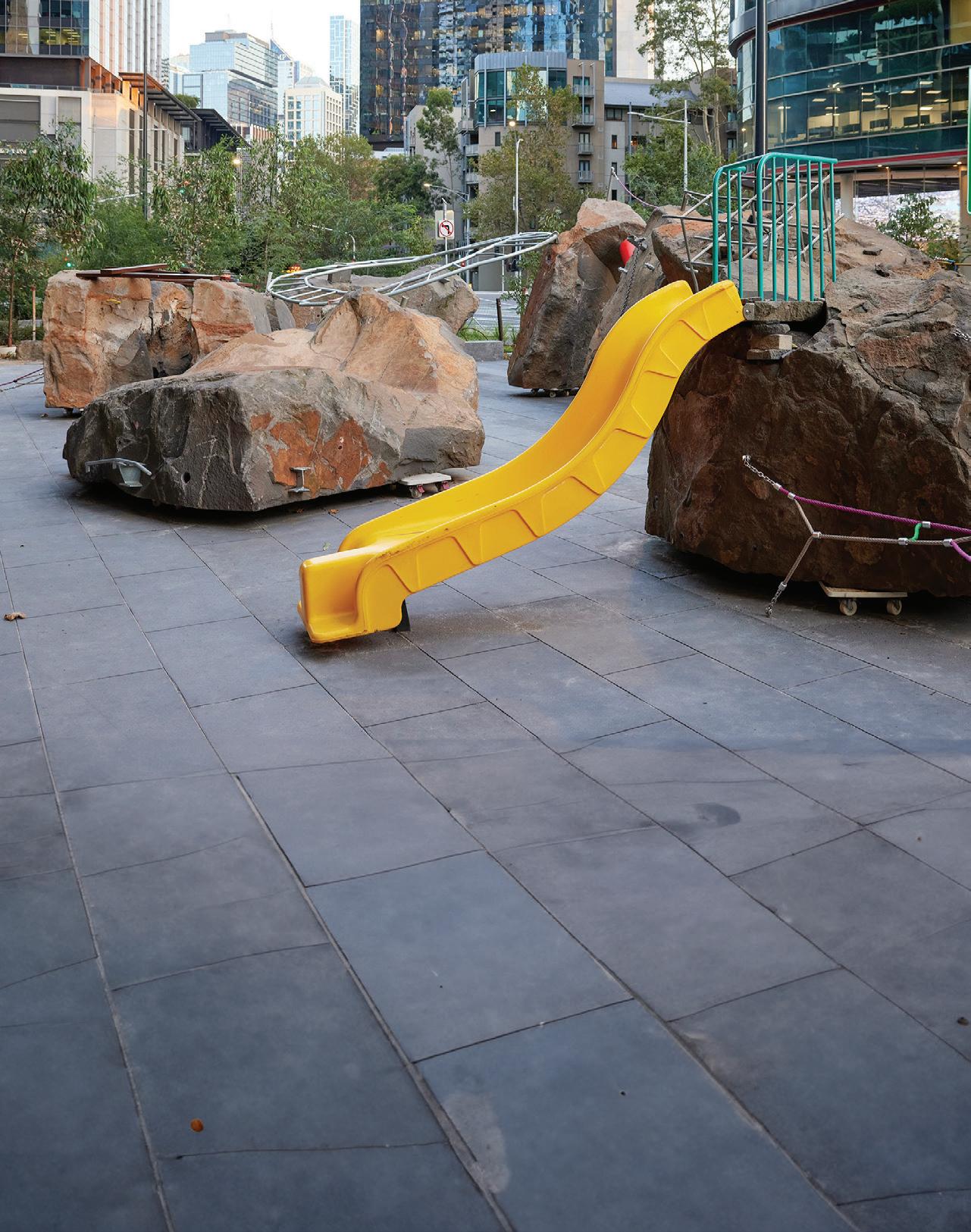

Melbourne’s Yarra City Council has recently developed and launched its Financial Sustainability Strategy, designed to guide Council on how to best manage resources for the long-term in the best interests of the community. Here, we outline the key elements of the strategy for other councils looking to develop similar initiatives.
Yarra City Council is committed to the responsible management of ratepayer’s funds and ensuring our community can thrive, now and into the future.
As part of our commitment to improve our financial health, we developed a Financial Sustainability Strategy.
This Strategy is the first of its kind for a local council in Victoria and was endorsed by Council at Yarra’s December 2023 Council meeting.
Financial sustainability means consistently having sufficient reserves in the tank to meet unforeseen or emergency expenses, without relying on borrowing or compromising essential services.
The Strategy will guide Council on how to best manage our resources for the long-term in the best interests of our community.
Like most Councils, Yarra currently has a Long-Term Financial Plan which helps inform Council planning and predicts the funding we will need to fulfil the needs of our community, along with where we are expected to be financially in the next ten years.
The Financial Sustainability Strategy looks at those predicted numbers and identifies strategic ways to address them, so that we are in an improved financial position and can deliver for our community both now and into the future.
Like all Councils in Victoria, we are facing challenges to our financial sustainability from rising cost pressures, rate capping and cost-shifting, along with increasing pressure and demand on our services and infrastructure from a rapidly growing population.
We were proud to have provided additional financial support to our community through the COVID-19 pandemic and recovery. However, the financial impact of this, compounded with legacy debt, means we have limited reserves left to meet the growing needs of the Yarra community.
Thanks to hard work across the organisation, Council has made significant progress to improve our financial position and get back on our feet.
In the last financial year we were able to deliver a $23.3m surplus – a $22m increase on the previous year – and we improved our risk rating based on ratios set by the Victorian Auditor-General's Office (VAGO).
At the same time as delivering this surplus, we have improved project delivery, introduced a separated waste services charge and made commitments to ongoing improvements to resource management including expenditure controls, responsible management of debt and operational efficiencies, among many others.
Council is deeply committed to serving the best interests of the community and recognises that consistent effort is required to ensure we remain financially sustainable.
The Financial Sustainability Strategy has goals over both the short and long term to ensure financial sustainability
for Council:
∞ 0-2 years: maintain a net positive position by delivering a surplus, ensure our operating activities no longer relies on borrowings, hold costs and start to build cash reserves for specified purposes
∞ 3-5 years: achieve a financial position where Council has sufficient cash reserves to repay borrowings, generate new revenue, can cover all known operating expenses without borrowing, deliver a long-term financial plan that more reliably reflects future financial requirements (unknown risks), and have cash reserves for risk and strategic growth
∞ Within 10 years: ensure that Council has sufficient cash reserves to meet unforeseen or emergency expenses and support population growth without relying on borrowing or compromising essential services
The Strategy identifies two types of levers for change to ensure Council’s long term financial sustainability:
1. Strategic levers – to ensure that future investment decisions are based on need, underpinned by evidence and guided by informed strategies including detailed asset management plans, contemporary property management and community infrastructure planning and an ongoing program of service reviews
2. Systemic levers – to manage expenditure, prudent debt management, operational efficiencies and capital works delivery management among others
The Strategy will guide future decision-making so Council can transparently, proactively and prudently plan to be financially sustainable. It will ensure financial sustainability remains consistent with maximizing our community impact and delivering efficient and effective services and infrastructure and meet our financial obligations both today and in the future.
Within the framework of strategic levels, Council has identified seven key strategic levers, outlined in the Financial Sustainability Strategy, which will help us get to where we need to be and guide Council’s direction over many years.
These are as follows:
1. Sustainable cash reserves
We'll build cash reserves for strategic purposes, enabling community infrastructure for a growing population and to respond to unforeseen events. We'll also decrease our reliance on borrowings, ensuring a stable financial foundation.
2. Well planned assets
We'll maintain our community's assets at a level that caters to current and future needs. Our focus will be on renewals and new infrastructure, ensuring the right blend to meet community needs.
3. Increasing our revenue
We'll optimise our revenue-generating assets and services, reflecting the true cost of services provided.
4. Investing in transformation
Through technology, process improvements and careful planning, we'll enhance the customer experience, service delivery and operational efficiency.
5. Review of the service landscape
We’ll establish a new service planning and review framework to ensure all services are relevant, financially sustainable and can meet future community needs.
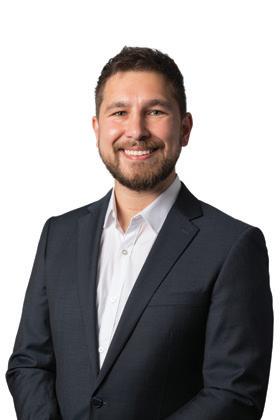
6. Robust financial management
We'll make fiscally responsible decisions and put in place effective financial planning and responsible budgeting processes.
7. Partnerships and advocacy
We'll strengthen partnerships and advocacy efforts to secure resources and navigate financial challenges.
We believe the seven strategic levers outlined in the Financial Sustainability Strategy will help us get to where we need to be and guide Council’s direction over many years.
“This Strategy is a representation of our commitment to the responsible management of ratepayer’s funds. By focusing on financial sustainability, we’re ensuring we can meet the service and infrastructure needs of our community, now and into the future,” said Yarra City Council Mayor, Councillor Edward Crossland.
“As the first Victorian council to create a strategy of this nature we hope to demonstrate its positive impacts in the years to come and be a leader in this space.”
It is critical to ensure that decisions made are in the best long-term interests of the municipality, not only for now but for our community in the future.
Great progress on the strategy has been achieved already. One essential key to success has been the whole of organisation commitment to working together to ensure the financial sustainability in the future.
Thinking financially has become part of the DNA of being an employee or Councillor at Yarra. We are very excited that we have a solid plan for the future and are collectively committed to making it happen.
This strategy is a representation of our commitment to the responsible management of ratepayer’s funds. By making this move we’re ensuring that we can meet the service and infrastructure needs of our community, now and into the future.
As the first Victorian council to create a strategy of this nature we hope to demonstrate its positive impacts in the years to come and be a leader in this space.
Yarra City Council Mayor, Councillor Edward Crossland


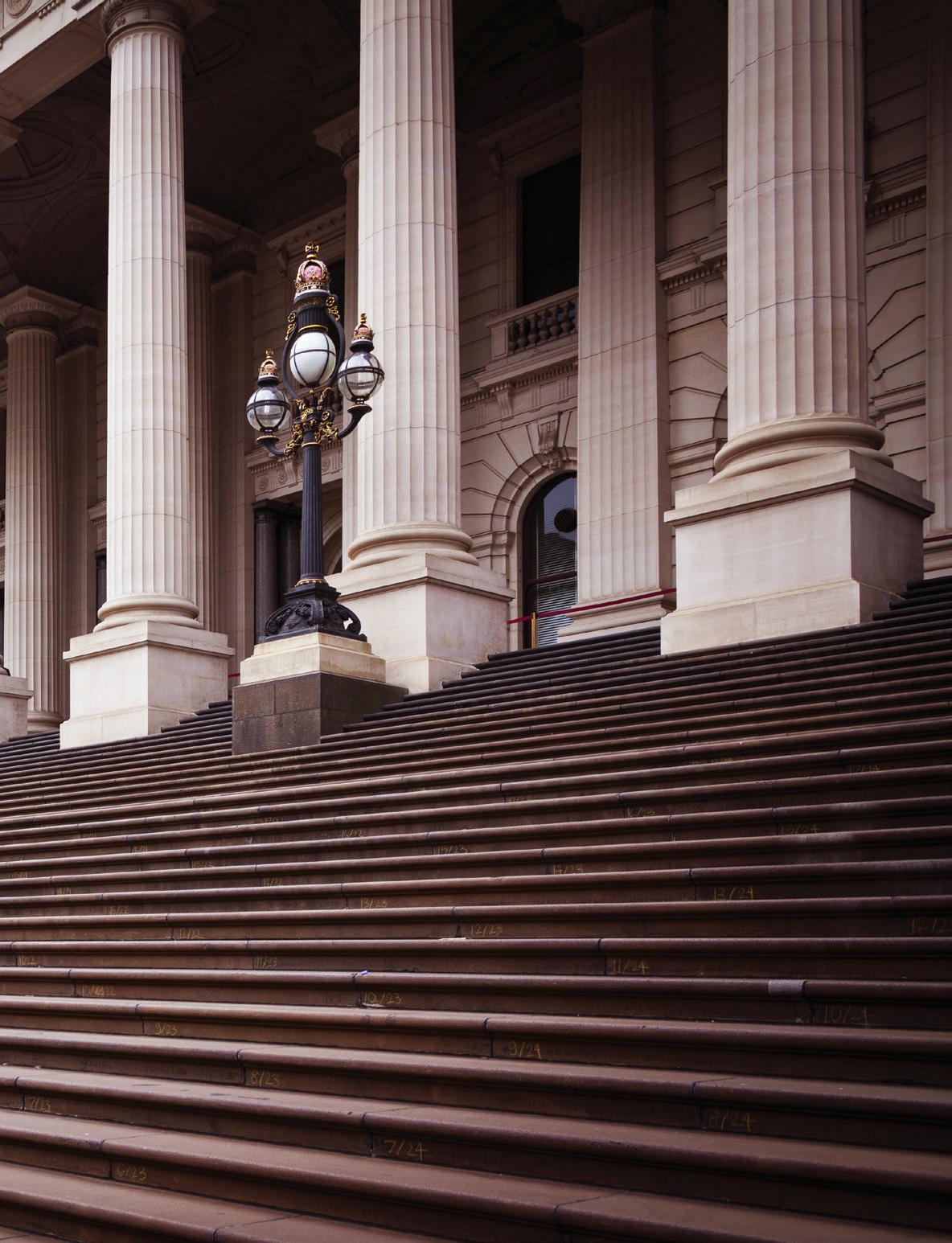 By Kody Cook, Journalist, Council Magazine
By Kody Cook, Journalist, Council Magazine
Australians expect their elected officials and representatives to uphold a standard of integrity in their behaviour and to always act in the best interests of those they represent. Unfortunately, a lack of behavioural standards is leaving some ratepayers disappointed with their councillors, which is why planned reforms in Victoria are looking to restore trust by holding local government representatives accountable for their actions.

In November 2023, it was announced that the Victorian Government is planning to introduce new legislation which will expand and elevate governance, integrity and behavioural standards for councillors across the state.
The announcement was made by Victorian Minister for Local Government, Melissa Horne, who said that Victorians rightly have high expectations of their local councillors and that these changes will ensure residents can have confidence their best interests are being served.
“Having a model code of conduct and mandatory training makes sense and extends reforms we introduced before the last council elections. They will help encourage quality candidates to come forward for the 2024 polls,” Minister Horne said.
Council Magazine had the opportunity to interview the Victorian Local Governance Association (VLGA) CEO, Kathryn Arndt, regarding the purpose of the planned changes and what brought them about.
Ms Arndt explained that the planned changes to the Local Government Act 2020 stem from both the Victorian governments’ Local Government Culture Project of 2021,
which saw more than 140 submissions on the conduct of councils and councillors, and Operation Sandon and those broader recommendations of the Independent Broad-based Anti-Corruption Commission (IBAC) to improve governance and build public trust in local councils and councillors.
These efforts came about after local government leaders and members of the community called for action because confidence in local government in some areas had suffered due to poor councillor behaviour and ineffective performance.
Between January 2023 and the announcement of the reforms in November, almost 30 councillors resigned, while municipal monitors were appointed as an urgent intervention to protect local communities eight times in the 18 months before the announcement – at Glenelg, Strathbogie (twice), Horsham, Darebin, Wodonga, Geelong and Yarra. Moira Shire Council was dismissed and replaced with administrators.
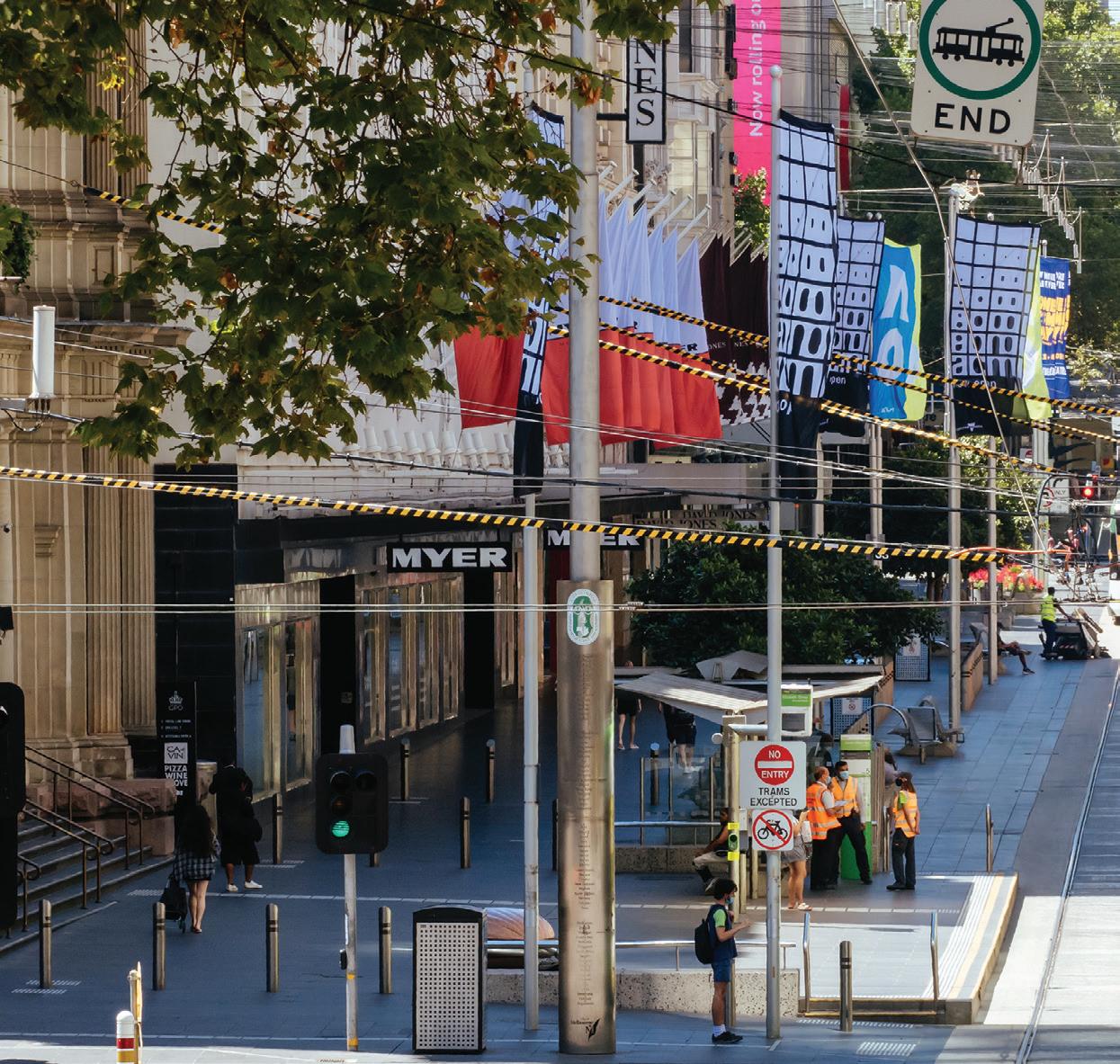
The State Government undertook a consultation process with the sector about the proposed reforms, which closed on 29 February 2024. Legislation is planned to be introduced in the first quarter of 2024.
The amendments to the Local Government Act 2020 will address recommendations made by integrity bodies such as the IBAC and the Chief Municipal Inspector.
The planned reforms are set to introduce mandatory training for elected representatives, a uniform councillor code of conduct and strengthened powers for the Victorian Minister for Local Government to address councillor conduct.
The Local Government Act 2020 mandates induction training for new councillors and the changes will take this focus on education and training further with a requirement for ongoing training for councillors.
Ms Arndt said that the requirement for ongoing councillor training and professional development is a positive change.
“The VLGA’s own training and professional development programs are always in high demand by councillors,” Ms Arndt said.
“If this training is to become mandatory however, it should not be at the cost of local services. There must be adequate resourcing and financial support for councils and approved high-quality training providers like the VLGA, who understand local governance and relevant professional development for councillors.
“The VLGA is the only organisation dedicated to supporting councillors on good governance, integrity and performance issues in their elected roles.
“We deliver on-demand training, professional development programs and run a councillor support service. We speak to councillors daily about their challenges and frustrations and we support them to deliver positive outcomes for their local communities through high performance leadership and effective governance.”
The State Government has said that good governance is critical to ensure councils make sound decisions and deliver the services their communities need, and that expanded
powers to address councillor misconduct will discourage poor behaviour.
Reforms will give the Minister for Local Government the ability to suspend or disqualify individual councillors found to have created a risk to health and safety or prevented the council from performing its function. The Chief Municipal Inspector will also have enhanced powers, including the ability to issue infringement notices.
In regard to the proposed reform providing the Minister for Local Government with the power to remove an individual councillor, Ms Arndt said that the VLGA has approached our submission to the reform consultation paper on the assumption that any reforms that may arise need to be set within the current policy framework that recognises local government as a democratic institution and respects the role of Councillors as representatives of their constituents.
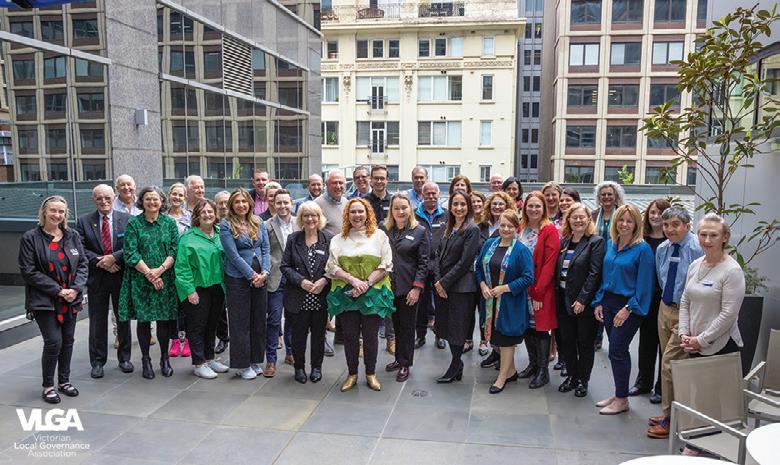

“Generally speaking, an elected official ought only be suspended or disqualified by the decision of a judicial or quasi-judicial body, where the rules of natural justice apply. Disqualification or suspension of an elected official of one arm of government at the discretion of an elected official of another arm of government may be problematic for democratic principles.”
“With recent Council electoral structure review outcomes generally supporting single member Council wards, an extended suspension of a Councillor for a period of up to 12 months will result in a lack of local representation for ward constituents.”
The VLGA believes that this potential sanction of suspension or disqualification should be available only to a court, tribunal, or Councillor Conduct Panel.
A model code of conduct for councillors with tougher sanctions for misconduct is also set to provide a uniform set of standards and reduce the regulatory burden on councils which will no longer need to establish their own codes.
Ms Arndt said that when it comes to governance areas, such as a code of conduct, consistency across the sector is a good thing – provided local councils are still able to reflect local community issues and build on a standardised model of conduct.
“For example, some local councils have their own codes of conduct in place which limit councillor contact with lobbyists and property developers. We still want to be able to embed community sentiment in the codes of conduct guiding our councillors.”
However, there are elements of this proposal that the VLGA believes require clarification. The intent of the language used in the consultation paper "and any other governance matters
to be prescribed by the regulations" requires clarification and some indication of the proposed content of these other model documents should be provided to the sector for consultation and comment.
Ms Arndt said that it will remain to be seen how these changes will impact community confidence.
“Our core priority is to ensure that the voices and opinions of our members are appropriately consulted with as changes are considered. We know the community has high expectations of our councillors; to make good decisions based on community needs and to govern their organisations with integrity, and we agree the core principles of these reforms are solid – to reinvigorate community trust in our membership. A good test of community confidence will be the upcoming local government elections in October of this year.
Ms Arndt said that the VLGA’s priority is both supporting its membership to maintain their high standards in local government and continuing to engage with the Victorian Government as consultation methods for these proposed reforms are announced.
“As councils are more closely connected to the community than any other level of government, we are uniquely positioned at the coalface level to guide the Victorian Government on reforms, to ensure they are both long-lasting and impactful for both our membership and the broader Victorian community.”
The Victorian Government will continue to consult with the sector in the coming weeks about the development of the regulations for the councillor model code of conduct and mandatory training, the legislation for which is planned to be finalised and introduced before the end of the first quarter.


A striking new gateway into the City of Parramatta is now complete with the Alfred Street Bridge open to the public, forming an important part in a growing network of active transport links to make the City easier to navigate for pedestrians and bike riders.
The 4.5m-wide, 200m-long Alfred Street Bridge spans the Parramatta River between James Ruse Drive and Gasworks Bridge. Now complete, it provides the City’s growing population with a convenient, safe and scenic connection over the river, directly to the future Stage 1 Parramatta Light Rail.
A truly unique design, this is Australia’s first true diagonal arch bridge, designed so the arches are arranged diagonally in relation to the bridge’s horizontal axis.
The bridge shifts in orientation curving from the east at the Alfred Street entry to the west at the Baludarri Drive end and connecting neighbourhoods on either side of the Parramatta River. The unique diagonal arch gives people the opportunity to enjoy the experience of moving through the arch whether they are on the deck or passing underneath on a ferry.
The $19 million project has been co-funded by the City of Parramatta Council and the New South Wales Government – which has provided a $11.5 million funding contribution through grants from Transport for New South Wales and the Department of Planning and Environment.
New South Wales Minister for Transport, Jo Haylen, said the bridge was an important connection for Parramatta and beyond.
“The Alfred Street Bridge is a stunning new connection across the Parramatta River for people walking or jumping on their bikes,” Ms Haylen said.
“With an estimated 1.5 billion walking and bike riding trips taken each year across New South Wales, it’s vital we make active transport options safer and easier.”
Constructing the Alfred Street Bridge was an incredible undertaking for Council with around 280t of Australian BlueScope steel being used to fabricate the deck and arch, as well as over 780m3 of concrete being used in the construction of the bridge.
City of Parramatta Lord Mayor, Pierre Esber, said he was proud to officially open this much-needed bridge to the community.
“Alfred Street Bridge is a distinctive new landmark for our City that will make it safer and faster for our growing community to travel throughout Parramatta,” Lord Mayor Esber said.
“We live in a beautiful City and Alfred Street Bridge will cut down commute times and make it easier to connect to public transport and travel to the CBD. It’s an important link that will connect the community to more than 20 kilometres of pedestrian and cycling paths to enjoy and explore our natural surroundings.”
“For those who live north of the Parramatta River, this bridge will cut the trip into the CBD by up to 20 minutes,” Lord Mayor Esber said.
A spokesperson for Council said the project would provide many benefits for the growing Parramatta community, creating an essential connection to open green space, the future light rail stop, restaurants, urban services and would create easy access to the Parramatta River.
“The bridge will connect our community to the great outdoors and allow users to explore more than 20km of off road paths along the Parramatta River. It also establishes two new recreational loops based on the two bridges either side of Alfred Street,” the spokesperson said.
The project is a key element within a network of planned pedestrian and cyclist networks centred on the Parramatta River and Alfred Street. Council has worked in collaboration with the New South Wales Government to plan and deliver this network, which is expected to be completed within 12 months.
As an important gateway in and out of the Parramatta CBD, the Alfred Street Bridge design had to meet high expectations.


“The design team for the bridge was selected in the tender not just on their experience, but through demonstrating how the architectural and engineering teams would work together to deliver an exceptional result,” the spokesperson for City of Parramatta said.
“The design team was challenged by Council to prepare a number of simple yet elegant solutions for the review of an expert Design Review Panel. Ultimately, the diagonal arch was recommended by the Panel as not only the most appropriate response to the setting, but it also meant people travelling on the river over the bridge would pass ‘through’ the arch.”
The spokesperson also explained that strong coordination between Council, the New South Wales Government and local stakeholders – throughout the design and construction phases – has been key to the success of this project.
“The bridge was very complex to design and deliver. The design was tested to withstand both high-velocity winds and floodwaters,” the spokesperson said.
Off-site in Western Sydney more than 30 workers fabricated the deck and arch using 280t of Australian BlueScope steel, with transporting these assets to the site proving to be a challenge.
“Each was fabricated in three pieces, then trucked from Western Sydney to the site on oversized prime movers in the night. The deck pieces, then the arch, were assembled on site and each lifted into position using a 750t crane. The steel cables that support the deck had to be manufactured in Italy and a specialist team had to fly in to oversee the installation.
The project has trended on social media, with members of the community expressing enthusiasm and curiosity about the bridge, affectionately known as “Alfie” for now until it is formally named, as well as sharing pictures of the construction progress.
Long-time Parramatta resident, Greg Temme, has lived in the area since 1985. He has watched the bridge come to life from his apartment window, and said the Alfred Street Bridge will cut down his travel times by up to 20 minutes.
“We’re really looking forward to the opening of the Alfred Street Bridge. It will be a life-changing addition for us, it’s going to make it so much quicker to visit the town centre and the local shops,” Mr Temme said.
“We’ll be able to cross the bridge and connect to the future Parramatta Light Rail stop at Tramway Avenue where we can travel straight to Western Sydney University, Westmead Hospital, Eat Street and Parramatta CBD.”
Since the launch of the design in 2017, community support has brewed and it was well received once Alfie was opened in January 2024, with commuters quickly adopting the new route.
“Alfred Street Bridge is already popular with both pedestrians and cyclists, with hundreds using it everyday,” Mayor Esber said.
“Almost 500 people on average travel over our beautiful Parramatta River every day. We expect this to increase throughout the year as we complete the connecting pedestrian and cycling network to the south, and once the Parramatta Light Rail stop on Tramway Ave is operational.”
“Our vision for Parramatta sees a further increase in active transport, and Alfred Street Bridge is just one of many pieces of infrastructure planned to help make life easier for our residents who leave the car at home and want to take a leisurely ride or walk for fun, or to travel to work or study.”
“Alfred Street Bridge is just one part of a large active transport route – we encourage everyone to come have a look and enjoy the river views while walking over this beautiful bridge.”
But the work doesn't finish here. Pedestrian and cyclist paths are being planned for staged delivery south of the Parramatta River, along Alfred Street down to Parramatta Road, to provide safe and enjoyable pedestrian and cyclist access to the bridge.
Most importantly, the community will have the opportunity to name the bridge with community consultation planned for 2024, but for now the Parramatta community can take advantage of the new “Alfie” gateway.


More than 130 years of pub history continues to flow at Matso’s Eumundi, thanks to a collaborative approach between Sunshine Coast Council, popular boutique brewery Matso’s and architects Five Mile Radius to preserve the pub’s history.
The opening of Matso's Sunshine Coast Brewery, in the hotel formerly known as Joe's Waterhole, is the latest chapter in the long history of the hotel, which was originally opened by E.H. Arundell as the Railway Hotel in 1891.
During the 1900s the Railway Hotel underwent a makeover and adopted the new name Commercial Hotel. These first few decades saw the local pub survive through many tough times, including drought and a fire that destroyed the then two-storey pub, which was replaced with a new building a year later in 1925.
Most recently known as Joe’s Waterhole, the pub has a long and rich history in the local Eumundi community as a place that became a hub of laughter and good times.
The classic Queensland pub’s most recent renovation has focussed on retaining its heritage while showcasing the unique Matso’s identity.
Architects Five Mile Radius worked closely with the Sunshine Coast Council Urban Design and Architecture team to honour and retain the historic pub’s heritage while breathing new life into the venue.
The Sunshine Coast has nine heritage pubs dotted across the region. The Aussie pub is not only a cultural icon – for decades, pubs played an important role in contributing to the local character and look and feel of our townships.
The people of the Sunshine Coast greatly value that our region is a ‘community of communities’ or a collection of townships, and the old pubs have, since the settlement of the region, continued to play a historic role.
One thing that may often be overlooked is that the pubs have been used for all sorts of social events and often had halls attached for dances, meetings and functions. These associations of gatherings at the pub still remain today.
The original pubs were made from timber milled in the local area and often served as boarding houses for people on the way to Gympie to prospect for gold or to feed local workers and pioneering business people.
Today, the heritage pubs play a very important role in placemaking. The community holds dear the often-prominent old buildings in the main streets of our country towns. These buildings play an essential role in establishing the local character of the town.
Council’s Placemaking Team works closely with communities going through the process of co-creating a refreshed look and feel for our towns and villages. As we redesign and reinvigorate our old towns and villages, we are mindful of respecting country character and any remaining heritage value in the towns.
As more people choose to live on the Sunshine Coast, as our economy grows and our climate changes, we need to protect the things we value about our region today so they may continue to be available to future generations.
Sunshine Coast Council has developed the Sunshine Coast Design book to inspire and encourage quality, place-based design on the Sunshine Coast now and into the future.
Sunshine Coast Design is a resource to help plan and design homes, buildings, parks, public spaces, streets and neighbourhoods on the Sunshine Coast. It achieves this by using a set of simple and accessible values and design principles.
Sunshine Coast Council’s architects welcome the opportunity to work with the region’s hotel owners and others who manage or own historic or iconic buildings on the Sunshine Coast.
Our aim is to assist with the design process and help ensure heritage values are respected, enhanced and maintained where possible.


As more people choose to live on the Sunshine Coast, we need to protect what we value about our region so our natural environment and built form assets continue to be enjoyed by future generations.
Sunshine Coast Design is part of a long-term Design Strategy and education campaign to help our community and Council manage the challenges of population growth,

economic development and climate change so that the liveability of the Sunshine Coast is maintained and enhanced into the future.
It is an important resource and vision to help plan and design buildings, streets, parks and spaces that complement and enhance the natural environment.
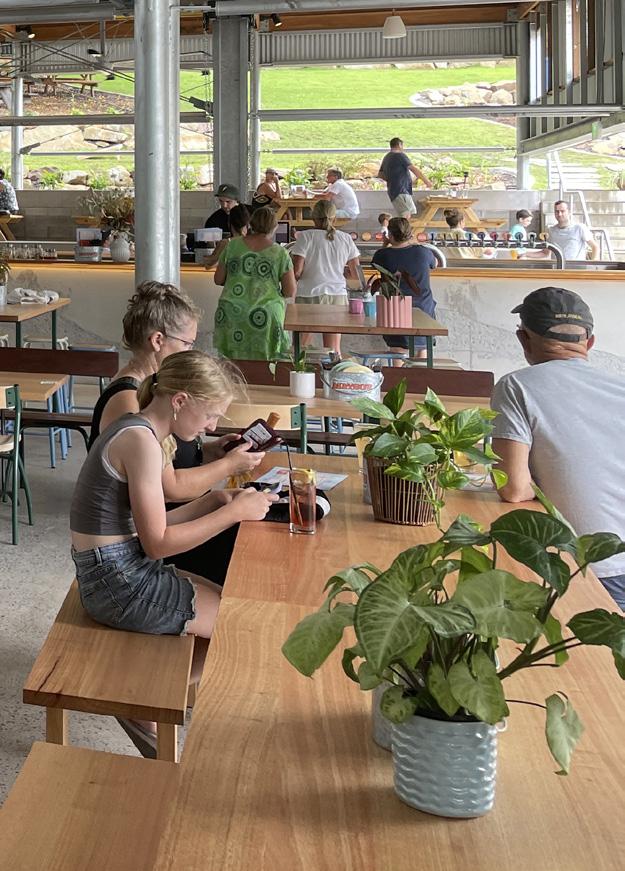
Inside
Ten design principles can be used in the design process to guide the design of buildings, placemaking projects, heritage and landscape projects to ensure they reflect the values of the community and are specifically relevant to our Sunshine Coast region.
Our Council architects use these design principles when assessing development applications and reviewing Council projects to ensure the best possible built form outcomes are delivered for the region.
In working with Five Mile Radius and Matso’s Brewery to consider the refurbishment of former Joe’s Waterhole heritage hotel in Eumundi, and to help them vision the most appropriate design for the proposed extension, it was necessary to consider a number of the ten design principles including:
∞ 1: work with the local climate
∞ 3: bring cultures, arts and heritage to life
∞ 8: create welcoming places that can be enjoyed by everyone
∞ 10: create and add value
We have led the way since the launch of our award-winning Sunshine Coast Design book in 2020 by incorporating the ten design principles in all Council projects and in providing design
1. Work with the local climate
2. Create places that respect and incorporate landscape
3. Bring our cultures, arts and heritage to life
4. Capture and frame views and create vistas
5. Strengthen and extend a network of green corridors
6. Be inspired by the natural and built environment
7. Create shady streets that put people first
8. Create welcoming places that can be enjoyed by everyone
9. Design places to be resilient and ready for change
10. Create and add value

advice for new buildings, parks, placemaking projects and master-planned communities. In fact the design principles are used to guide any design project on the Sunshine Coast.
From small to major projects, design teams and consultants are encouraged to use the ten design principles early in the development and visioning of a project to ensure projects reflect the Sunshine Coast character and create the best outcome for our community.
Sunshine Coast Design provides essential resources to support the community in creating places and spaces that are intrinsically Sunshine Coast; that is, every project should respect the past and imagine the future, they should work with the climate, be green, relaxed and enhance the lifestyle and culture of this stunning region.
To find out more and discover how the Sunshine Coast Design Strategy was developed, check out our video on Council’s YouTube channel by searching “Sunshine Coast Design Strategy” or visit our website www.sunshinecoast.qld.gov.au/
sunshinecoastdesign
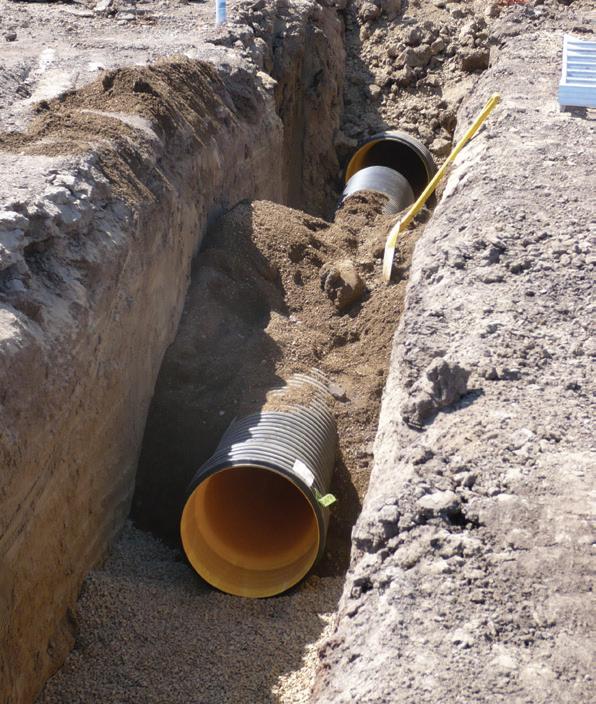
The Iplex product portfolio is a testament to their dedication of advanced solutions that enhance performance, durability, and efficiency. One such innovation is BlackMAX® stormwater pipes and fittings.
As the original Australian made large bore structured wall polypropylene pipe manufacturer, Iplex takes incredible pride in offering councils, asset owners, developers and plumbers an alternative to conventional drainage solutions.
Produced from polypropylene, the efficient design of the BlackMAX profile wall features a smooth inner bore and corrugated outer wall, optimising hydraulic performance whilst maintaining structural integrity.
Manufactured in Australia, BlackMAX is recognised for its durability and low-cost benefits compared with other conventional drainage pipes.
“We wanted to provide an alternative solution to conventional drainage pipes, offering a durable, lightweight pipe which is resistant to corrosion and root intrusion,” said Iplex National Technical Sales Engineer Don Tasevski.
Boasting over 85 years of expertise, Iplex has positioned itself as a leading water solutions provider in Australia. Through a dedicated commitment to collaboration, expertise, and innovation, Iplex has become a trusted partner for water authorities and within the civil, irrigation, and plumbing markets.
Poor joint performance can lead to leakages and tree root intrusion causing pipe blockages and groundwater infiltration. For this reason, the quality of the joint is critical to the performance of any pipe system.
The BlackMAX jointing system is designed with a high-quality spigot and socket rubber ring.
“The spigot and socket design includes a reinforced corrugated socket up to DN525 and a double wall socket ‘cuff’ for larger sizes ensuring added security at the pipe joint,” said Mr Tasevski.
BlackMAX pipes are highly resistant to corrosive and aggressive ground conditions, such as acid sulphate soils and saline ground waters, enabling years of corrosion free service and low maintenance. The Water Services Association of Australia appraisal of Iplex Structured Wall polypropylene pipes state a service life of more than 100 years, if designed and installed in accordance with industry standards.
A key benefit of BlackMAX pipes is the ease of installation compared to conventional drainage pipes. These
pipes can be easily manoeuvred in confined areas by hand or with light lifting equipment.
And with the recent spotlight on the health implications of silica dust exposure, the advantage of not cutting concrete pipes is becoming an important point in the discussion.
“BlackMAX pipes can be cut without risks of silica dust exposure, pipes can be cut anywhere along the pipe length with a hand saw and joined easily with the rubber ring,” said Mr Tasevski.
As Iplex looks to the future, the current BlackMAX range will be extended to provide the complete package of pipes and fittings for project requirements.
“It’s an exciting step forward, as councils and water authorities continue to support alternative products in the stormwater market, the potential for differing sizes and applications will grow,” said Mr Tasevski.
“Our large diameter corrugated pipes will provide huge opportunities for our customers and the communities they serve.”

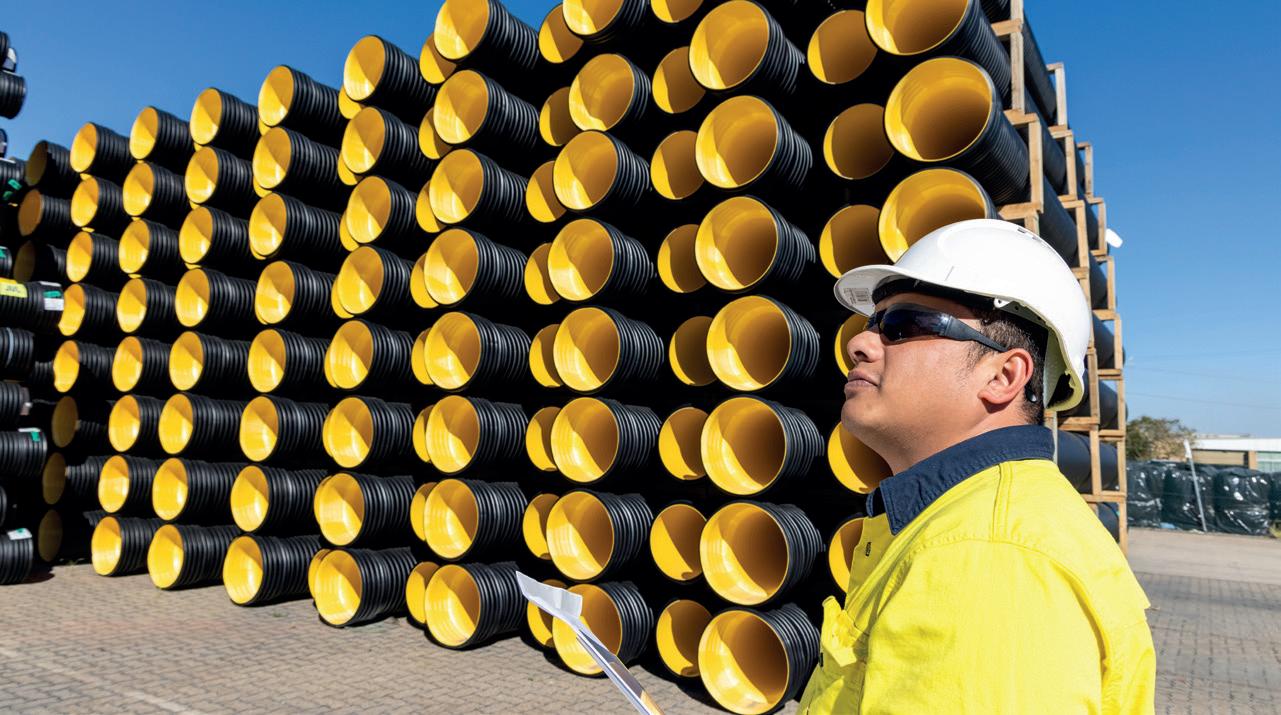


In a housing and cost of living crisis that has caused rates of homelessness and housing insecurity to soar, councils across the nation are doing their best to ease housing pressures for their communities with housing initiatives and projects, even when faced with limited funding.
The annual Report on Government Services, released in January by the Productivity Commission, has revealed a sharp spike in demand for housing and homelessness services.
This is in addition to a variety of bleak statistics from 2023–2024 that reveal a surge in the number of people who were sleeping rough before accessing housing services, and a jump in the number of people who exited homelessness support into rough sleeping.
The housing crisis has been widely recognised by federal and state governments with a variety of initiatives and reforms, including the National Housing and Homelessness Plan by the Australian Government and state reforms such as Homes NSW, which will see the state’s public housing transformed.
While federal and state governments are primarily responsible for the funding and delivery of housing across Australia, all levels of government contribute to the provision of safe and affordable housing.
Councils are the closest level of government to communities, and as such are uniquely positioned to know and understand their needs.
In August 2023, the Federal Government announced it would contribute $500 million in funding to support local councils in addressing the affordable housing crisis facing the nation.
As the cost of living continues to rise and many Australians struggle with housing, more and more councils across the country are engaging in housing initiatives specifically targeted to their communities’ needs to lighten the burden.
As a first step, many councils across the country are focusing on projects that increase supply.
In November 2023, the Hornsby Shire Council in New South Wales committed to building 4,900 new dwellings to meet the mandated dwelling targets set by the State Government.
The commitment is part of the Hornsby Town Centre Masterplan, in which the Town Centre skyline will be redefined with slender residential towers clustered around the train station and mall, varying in height up to 36 storeys.
Also in New South Wales, the Tolland Estate in Wagga Wagga will deliver a mix of social, affordable and private housing with its proposed 500 new homes to meet the critical housing needs in the area.
Wagga Wagga City Council has worked closely with the Land and Housing Corporation (LAHC) in the development of a draft masterplan for the project, which includes 200 social and affordable homes.
In Tasmania, the Hobart City Council has partnered with state and federal governments in a project to revitalise the Macquarie Point precinct, with housing planned to be a central part of the precinct.
A public-private partnership will see Regatta Point developed with a variety of waterfront housing, including affordable homes as well as housing for essential health workers and veterans.
Toowoomba Regional Council announced in 2022 that it will combat the shortage of rental accommodation in the region by providing social and affordable housing in the city centre.
Council will collaborate with a not-for-profit community housing provider in the development of the multi-storey development to support its residents as the region battles with low vacancy rates.
With an alarming number of residents experiencing or at risk of homelessness, the City of Melbourne partnered with the State Government, Unison Housing and the philanthropic and corporate sectors to create safe and secure transitional housing for those most in need, right in the heart of the CBD.
The Make Room project will repurpose a Council-owned building on Little Bourke Street, delivering 50 studio apartments and a number of other housing and homelessness services in addition to other wrap around support for vulnerable people in the state.
Residents will be able to stay for twelve months, or until they can find long-term, secure housing.
Each apartment will include a bedroom, kitchenette and ensuite bathroom. There will also be a number of communal spaces to bring residents together, such as a rooftop garden.
Estimated to be completed by mid-2024, Make Room will also offer care and support services on-site, including specialist health, housing and support staff.
In 2021, the Pyrenees Shire Council in Victoria completed a $6 million housing development to meet the needs of its growing population.
After little interest from housing developers to invest in the Beaufort area, 50km west of Ballarat, the Council purchased a large parcel of land to develop itself to ensure it was able to provide adequate housing.
The Correa Park Residential Development delivered 100 houses in stages over a span of seven years, with block sizes ranging from 700 to 1,100 square metres.
The lots were very popular with both new and existing residents and sold out quickly, with Pyrenees Shire Council able to recoup all of the money it invested through the sales.

The success of Correa Park Residential Development has inspired another housing project, with Council purchasing a second plot of land in Beaufort within walking distance of the town’s train station for a second development.
Pyrenees Shire Council intends to subdivide the land into 20 to 30 lots between 300 and 700 square metres in size to provide further housing for its community.
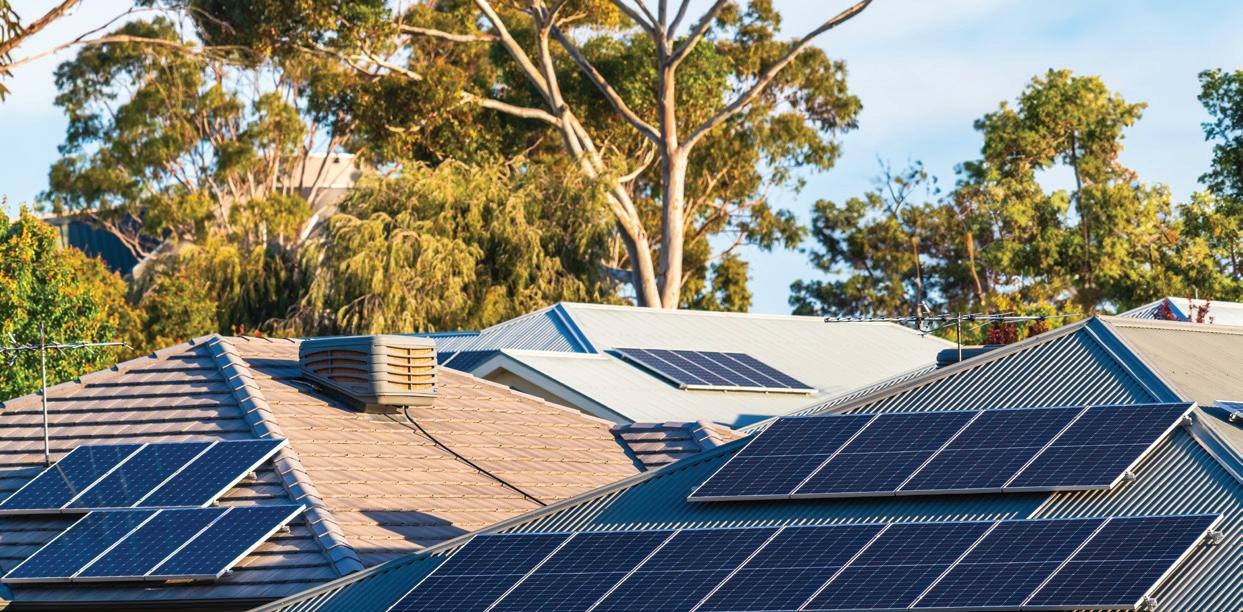
The Beaufort development has inspired other rural communities, and was featured in Rural Councils Victoria’s Housing Action Plan as an example of what is possible in rural and regional Victoria.
In January 2024, the Queensland Government announced that it would partner with the Goondiwindi Regional Council to redevelop a vacant aged care facility in Inglewood to support older residents.
As part of Queensland’s Housing Investment Fund, the project will deliver five affordable homes for seniors who are still able to enjoy supported independent living and wish to remain in their community.
The project will be jointly funded by the State Government and Goondiwindi Regional Council.
The homes will be fully accessible, modern and energy efficient, with work set to commence in mid-2024 and tenants to move in during the first half of 2025.
In New South Wales, the State Government announced in January 2024 that it would work with four local councils in a flood recovery housing program to support communities whose housing was affected.
The $40 million program will engage with communities through information sessions, workshops and online communication tools, with the assistance of the councils, to build a shared understanding of risk in the region.
The program is expected to offer a range of products such as raisings and retrofits to flood-proof existing dwellings, as well as buybacks and relocations.
To address the critical need for affordable home ownership in its municipality, the Wollongong City Council awarded a $5 million tender for a rent-to-buy homeownership pathway program as part of the Wollongong Housing Strategy in August 2023.
The program will fund Equity+, an affordable rent-to-buy pathway in which residents of affordable rental housing can apply to purchase their rental property.
It will also fund an enhanced empowerment service whereby community members will be able to access financial guidance
and support to increase their financial capability through supported savings education plans.
In October 2023, ten regional Victorian councils collaborated to jointly fund and appoint a dedicated regional housing officer, as they lacked appropriate staff to cope with the worsening housing crisis.
Councillors in the ten municipalities of the Loddon Mallee region in Victoria’s north-west commissioned a report investigating the region’s critical housing needs, with funding from the Victorian Government’s Department of Jobs, Skills, Industry and Regions.
The findings were compiled in the Loddon Mallee Housing Action Plan and identified poor strategic planning, a lack of housing diversity, and bureaucratic hurdles as the key housing challenges in the region.
Additionally, they identified potential strategies, including the creation of a dedicated regional housing officer role.
The trial position will require $150,000 in funding for 12 months, which will be shared between the Regional Development Australia Loddon Mallee Committee and its associated councils.
The housing and cost of living crisis has significantly increased the rates of homelessness and housing insecurity, and will require a coordinated and collaborative approach across all levels of government.
In August 2023, the Federal Government announced $500 million in funding to support local councils in addressing the housing challenges in their municipalities.
Though they are not primarily responsible for providing housing, councils across Australia have long supported their communities by investing in innovative housing solutions to increase supply and target specific housing needs in their regions.
Councils will continue to play a crucial role in addressing the housing crisis now and into the future due to their proximity to their communities and the knowledge they are able to share about their unique and specific housing needs.
Neighbourhood and community batteries are becoming an increasingly important part of the local and national electricity market. And now, groups are being offered more choice when it comes to the types of batteries they install within their communities.
For generations, Decon Corporation has shaped Australia's electrical and telecommunications landscapes. Now, Decon is poised to play a pivotal role in a new era of clean energy, not just as innovators, but as passionate advocates for sustainable technologies. This transition is marked by its embrace of Sodium-Metal Chloride (NaNiCl) batteries, a game-changer for reliable and environmentally friendly energy storage.
Leveraging its existing manufacturing expertise, Decon has embedded these revolutionary batteries into its clean energy offerings, crafting reliable and sustainable solutions.
Among the company's most notable developments is the Smart Power Cell, a product already adopted by major telecommunication carriers like NBN and Optus to bolster network resilience against disasters, ensuring continued communications to emergency services personnel and local residents in the event of power failure.
Imagine the Smart Power Cell as a versatile building block for clean energy independence. It's a modular system that combines NaNiCl batteries with renewable energy sources like solar and wind. This allows the cell to store excess energy generated during peak hours, providing reliable power when the sun sets or the wind dies down.
This adaptability makes the Smart Power Cell ideal for a diverse range of applications, from powering remote communities off the grid to providing backup power for critical infrastructure during blackouts. Furthermore, its compact size and minimal environmental impact make it a welcome addition to both sensitive ecosystems and urban landscapes.
The Smart Power Cell showcases not only Decon's technological prowess but also its commitment to collaborative innovation. The company actively works with renewable energy suppliers and system integrators to develop customised solutions tailored to specific needs. This collaborative approach ensures that the Smart Power Cell reaches its full potential, benefiting communities and businesses across Australia.
Decon's commitment to innovation pushes beyond the existing Smart Power Cell. With funding from the Victorian Government, the company has developed an AC version, with the aim of unlocking even more application possibilities. This innovative product is set to harness the strengths of sodiummetal chloride batteries, offering robust and environmentally friendly energy solutions for diverse needs across a diverse range of sectors.
In the rugged environment of construction sites, it provides consistent power for tools and equipment. Remote offices and research stations gain off-grid energy independence, while festivals and outdoor events can be powered sustainably and reliably.
The Smart Power Cell AC can also be used in off-grid charging stations to enable electric vehicle charging in remote areas, while communities and vital services gain a dependable and sustainable backup power source in uncertain times.
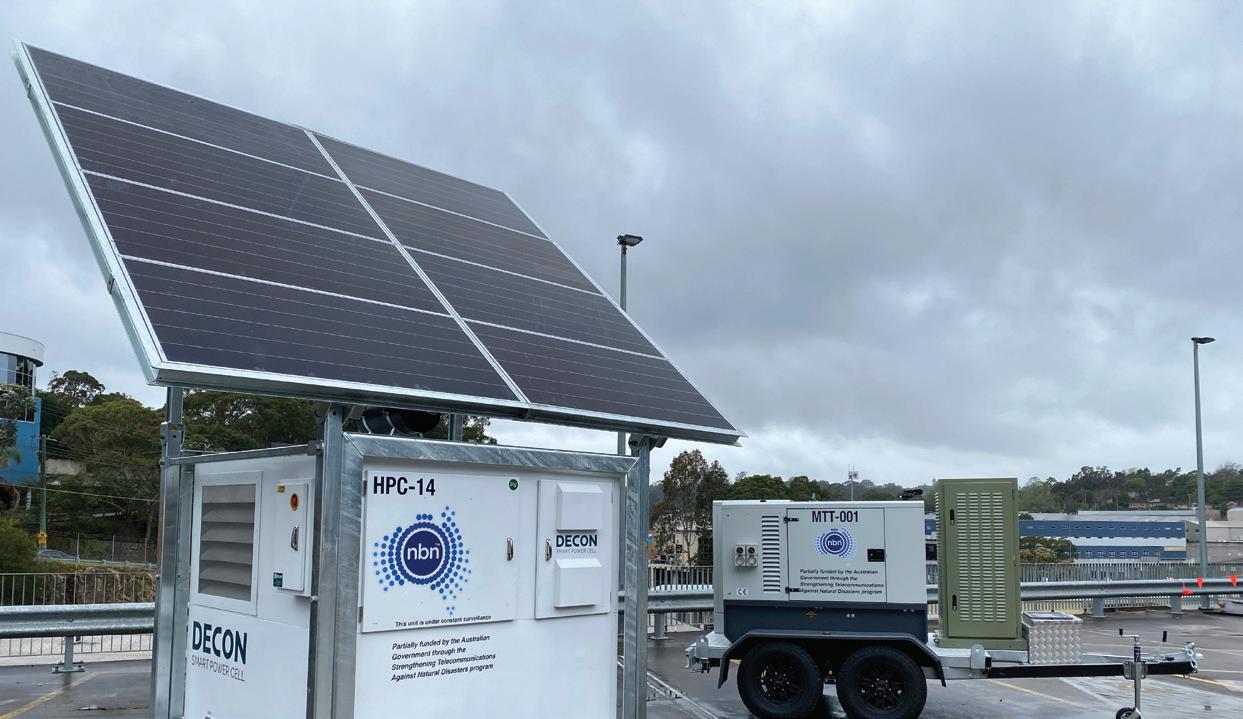
Decon's vision transcends simply building clean energy solutions. The company is championing a sustainable future for all Australians. Its dedication to collaboration, innovation, and responsible practices positions Decon as key players in this transformative chapter of our energy landscape. As the race for cleaner technologies intensifies, Decon is advocating for Australian progress and shaping a future powered by NaNiC batteries.
For more information, visit: www.deconcorp.com.au



Since the late 1930s, when Interflow founder Harold ‘Bill’ Weaver instilled a passion for learning and development within his business, Interflow’s people have been at the centre of everything they do. The HJ Weaver Development Program now enables people to develop skills for their future careers at Interflow.
After his first six months with Interflow as an intern, promising young engineer Matt Cremona was offered a place in a program that would introduce him to all parts of the business.

“I was given the opportunity to rotate around different divisions, for six months to a year each, within the organisation,” said Mr Cremona, who is now Delivery Manager at Interflow.
Most valuable, he says, were the relationships he developed during that time with people.
“Having those relationships meant that when I was given opportunities in other divisions, I could rely on those relationships to help me in my new roles,” he said.
That was 13 years ago. Interflow’s approach was built on Bill’s passion for
developing his people to be their best and formalised more recently as the HJ Weaver Development Program.
“The program is all about supporting and developing people over the years by creating a business environment that encourages, enables and supports learning,” says Fiona Warnock, Interflow’s People and Capability Business Partner.
“It’s looking not only at the entry level. It’s also about our existing team members.”
The HJ Weaver Program is made up of two streams that promote learning and development at every level. One is for the business’s interns, undergraduates and graduates. The other focuses on existing team members who want to develop or change their careers.
Chosen education programs are eligible for funding, including fees, textbooks and union fees. For a graduate, that can represent an investment of over $30,000 in their professional education.
According to Ms Warnock, In the current employment environment, it’s important that businesses planning for growth are also putting internal talent development structures in place to ensure the future growth can be supported.
“When people realise they are a vital part of that growth story, when they realise they’re valued and are being nurtured and developed, that’s what makes them want to stay with us.”
The program made a measurable difference in Mr Cremona’s life.
“It felt pretty special,” he says. “I was given an opportunity to set myself up in terms of career and development.”
A lot of other graduates he’d gone to university with were struggling to find careers or job opportunities while he was being developed through the HJ Weaver Development Program, he recalled.
“But I had that security,” Mr Cremona said. “As I graduated I was also being exposed to different avenues, different divisions and different relationships.”
Mr Cremona is now using what he learned to support and develop his own team at Interflow.
“That information has helped me succeed,” he said. “It has given me security and also confidence in my ability. I have the confidence now to know what I’m saying is right and to back my own decisions.”






We’re Creating the Future of Water for people and communities, for generations to come
For underground assets, non-intrusive solutions not only take the physical labour out of the job by avoiding open excavation, but they can also prevent unnecessary damage to the environment. When choosing the right pipe repair solution for a project, it is important to find ways to minimise open excavation to protect the environment and prevent delays.
While sewage and drainage systems are vital pieces of infrastructure, maintaining and repairing these systems can cause disruptions to communities and businesses if they are located in high-traffic areas, such as business districts or transport centres.
The only way to avoid excavation and delays is to deploy a non-invasive solution that can keep public spaces open and drainage infrastructure operational.
Quick-Lock is a trenchless pipe repair solution that provides a versatile, longterm solution for point repair, pre-lining stabilisation and liner end sealing. This
rehabilitation system can be applied to a wide variety of pipe materials – including concrete, clay, PVC and steel – which makes it suitable for different drainage systems across Australia.
The key benefit of utilising a trenchless repair solution is that the device can be installed with minimal need for excavation or digging. The Quick-Lock system is transported to the repair spot along the drainage system with a CCTV crawler, then once it is in position, the packer inflates and the locking device holds the sleeve against the pipe.
The damage is repaired and pipe sealed all remotely, saving workers heavy physical labour and preventing harm to the surrounding soil.
Leading Civil Solutions was engaged to provide a CCTV survey of the drainage infrastructure at an airport in Victoria to assess and provide recommendations for what repair and maintenance methods would be appropriate – with one of these solutions being Quick-Lock.
Peter Ados, Managing Director at Leading Civil Solutions, said the team used multiple products to facilitate repairs, but found Quick-Lock to be an ideal solution for the project.
“We put Quick-Lock towards the client because it has a 50-year lifespan and was easily accepted by the engineer since it helped to keep the runways open during works,” Mr Ados said.
“Using Quick-Lock helped prevent airport delays by avoiding the need for open excavation. The airport had a few critical drainage pathways under their traffic ways and runways, which meant we were able to facilitate the continued operation of the airport without having to shut it down and open-excavate.
“The efficiency and environmental benefit was considerable as well. We did not have to excavate and dispose of soil and backfill, which takes the physical aspect out of the job for the team and reduces the negative impact to the surrounding environment.”
As a long-term solution, using QuickLock helps to reduce future maintenance works, with the systems being made of materials designed for longevity, such as stainless steel.
“We have some further stages coming up at the airport and we are going to be using Quick-Lock to assist the airport to minimise downtime and continue working there,” Mr Ados said.
Quick-Lock’s non-invasive installation and longevity set it apart from other rehabilitation systems, providing support for vital infrastructure while also keeping businesses running as usual.
As a trusted supplier of drainage and sewage system repair and rehabilitation equipment, Sewer Equipment Company (AUST), or better known as SECA in the Trenchless Industry, offers Quick-Lock for Australian councils, businesses and other organisations.

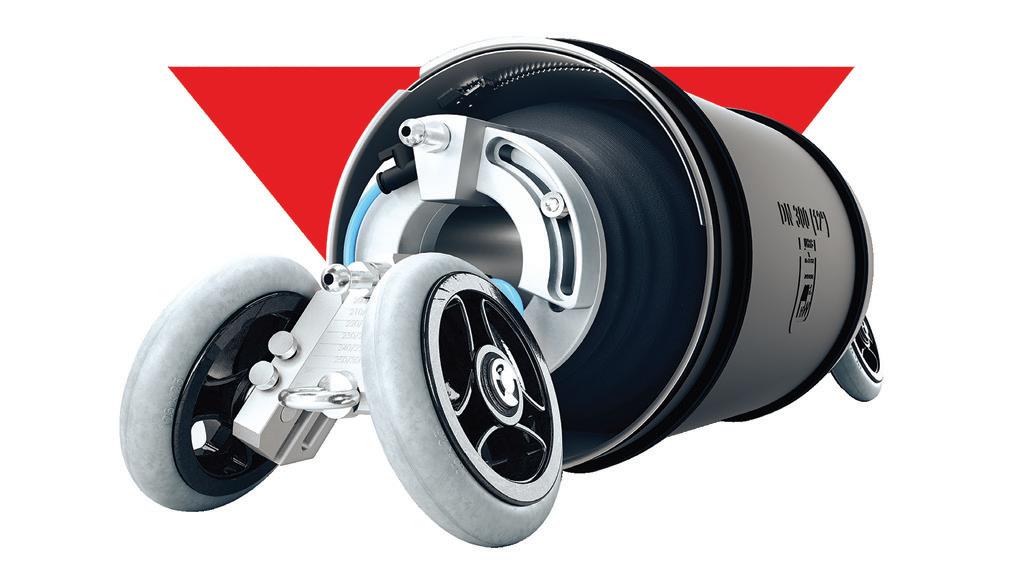
CERTIFIED BY:

Gone are the days of complex installations and disruptive excavations. Quick-Lock revolutionises pipe repair with its rapid and hassle-free installation process. Crafted from premium stainless-steel sleeve and durable rubber jacket, Quick-Lock ensures long-lasting performance. Its innovative design allows for effortless installation using a crawler or robotic system, paired with a compressor and Quick-Lock offset packer.
Here’s why Quick-Lock stands out:
Engineered with high-quality, durable materials for reliability
Say goodbye to emissions and foul odours during installation
No waiting around for curing time – get back to business swiftly
Enjoy a streamlined installation process, saving you time and effort
No excavation required, minimising disruption
Choose Quick-Lock for a seamless pipe repair solution that’s efficient, effective, and environmentally friendly.
Talk to the experts

BEFORE AFTER
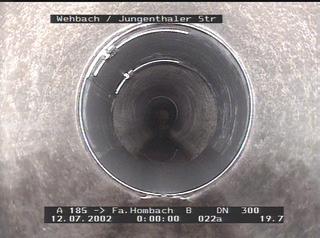
1800 028 584 or visit us online

In 2023, the Australian federal government made a bold commitment: achieving a circular economy by 2030. This ambitious goal reflects the fact that millions of tonnes of usable products are currently ending up in Australian landfills and as a result, local councils are bearing increasing financial and logistical strain from this waste, and citizens are struggling with mounting costs of living and increasing confusion on waste, reuse and recycling messaging. But any transition to a circular economy requires not just policy changes and technological advancements, but a fundamental reorientation of our relationship with products, our communities, and the planet itself.

While discussions on sustainability often revolve around large-scale technology-driven solutions, there's a quieter revolution happening in our neighbourhoods. Informal practices of circularity are proving to be powerful motors of change, offering a glimpse into a more sustainable future.
One example of this is the Buy Nothing Project, a global network of local gift-giving communities that has rapidly gained momentum in Australia. Originating in the USA in 2013, the Buy Nothing Project has rapidly expanded, boasting over 7.5 million members in approximately 7,000 local Facebook groups worldwide.
In Australia alone, there are at least 500 active Buy Nothing Project groups, spreading from Burnie to the Barossa, Mukinbudin to Townsville, demonstrating the widespread appeal of this grassroots movement.
Our recent study investigated two groups in the Brisbane City Council area and shed light on the transformative potential of these communities. What emerged was a portrait of ordinary citizens engaging in extraordinary acts of sustainability and community building.
As we see it, the Buy Nothing Project, and similar digital gift economies, for example the Good Karma network popular in suburban Melbourne, have significant potential to align broader council sustainability goals to the very ordinary practices of neighbourly generosity, hand-me-downs and hyperlocal sharing that are already embedded in the everyday culture of Australia.
The groups promise tangible benefits for community wellbeing, waste reduction and provide avenues for citizen education. This article shares actionable recommendations for local councils to identify, support and harness the potential of hyperlocal gifting in their area.
Formal and informal practices of product reuse, gifting and sharing exist in many forms around Australia. Popular platforms such as Gumtree and Facebook Marketplace facilitate commercial exchanges among strangers and traditions of reuse and hand-me-downs among family, friends and neighbours have always been a way for communities to support each other.
Two distinct features make the Buy Nothing Project unique: one, that it is facilitated digitally through closed groups on Facebook which are organised within a specific hyper-local area, such as a few or even just one suburb. Second, the products that are passed along through the groups are given for free, that is, they are gifted.
The groups activate a healthy local economy based on generosity and kindness, responding to two problems of modern life: waste and social isolation. The groups are currently popular in urban and suburban areas, with Perth alone hosting 145 groups across its 350 suburbs.
The great thing is that anyone can set one up. Volunteer ‘admins’ are responsible for upholding the values of the Buy Nothing Project and group members can ‘gift’ items they no longer use or ‘ask’ for something they need.
Our study revealed that the groups also facilitate shared tools or equipment libraries, travelling suitcases for clothing, and offer more specific services such as collective dump runs, weeding or skills development.
Members are encouraged to gift with no strings attached, though our research has shown that the social bonds fostered through the groups offer a strong opportunity to increase community wellbeing via local network building and the positive feelings fostered by altruism.
While many people join the groups with the intention of contributing to a sustainable future, their involvement also fulfills immediate and practical needs for community connection, financial savings or just getting free stuff.
Through the stories shared by the Buy Nothing Project group members we spoke to, we saw that participation in the movement fluctuated with the needs of everyday life – through parenthood, natural disasters, the pandemic and evolving personal values.
These dynamics underscore the nuanced motivations behind sustainable behaviours and offer valuable insights for councils seeking to promote a circular economy. In our interviews with Buy Nothing Project members, it was clear the groups also served as a convenient and responsible way to pass on their used items, with members saying, “One thing I particularly like about Buy Nothing is that it makes it really easy for me to find and recirculate things.”
Home décor, kitchen essentials, clothing, and kids’ items were the categories most often featured, but all sorts of items are shared and asked for, from the unexpected such as a chicken’s waistcoat, to generous offers of laptops and quad bikes, to mundane gifts of glass jars and compost. One member revealed that even products that are broken or tattered get taken, stating “I’m quite impressed by how people refashion things or use things that I would never have thought to be reusable. It's definitely interesting watching and learning.”
Concern for waste was high among group members we talked to, and many cited reducing their household rubbish as a primary goal of membership. Our analysis of the type of items in the Facebook groups revealed that the Buy Nothing Project primarily helps to divert products from general waste. With the cost of waste collection, landfilling and hard rubbish disposal an increasing burden for local councils, helping to facilitate reuse within neighbourhoods is a clear opportunity.
These groups aren't just about exchanging goods – they're catalysts for a shift in mindset and behaviour. One member we talked to initially joined to get free stuff but found herself embracing the core values of the Buy Nothing Project over time. She now “hates seeing things go to waste” and cited the group as a reason for her increased awareness about waste and overconsumption.
Another said “Being part of the group has massively changed what I think about or how I value waste. I'm really looking at what we put in the bin and thinking about, does that have a use? I'm being way more mindful about what I buy as well”.
To support this, group admins tended to play an educational role, with one admin noting that their posts “were more about educating people”. The accessibility of the groups, the fact that people are regularly exposed to ideas of reuse via their social media feed, and its others in their community are easy to identify with sharing these ideas, make this a simple and ideal way for citizens to learn about how circularity already happens in their neighbourhood, and how they can be involved too.
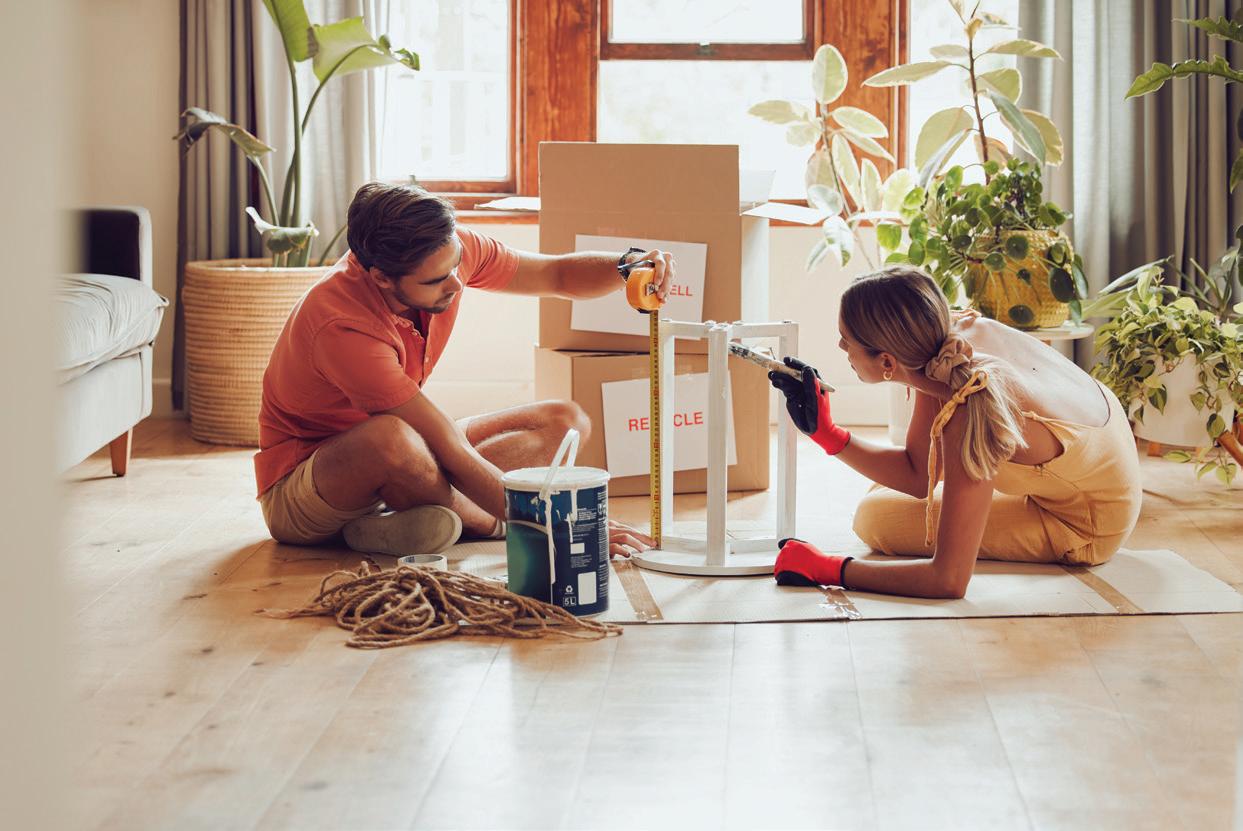

The foundations of generosity are powerful for building social bonds. One group member reflected on how being a part of her local Buy Nothing Project Facebook group helped her to feel more connected to her community. Many opt to join their local group upon relocating to a new area, citing “getting to know other people in the community” to facilitate a sense of belonging when she moved into the suburb.
For others, wellbeing benefits came from the acts of generosity and altruism facilitated by the groups. The act of giving, whether in response to a specific request or out of a desire to share something no longer needed, was seen as a meaningful way to contribute and experience personal fulfillment. Members often spoke of the positive emotions associated with giving, describing it as a source of “feel-good moments” and expressing that “giving feels great”.
Our findings reveal clear opportunities for local councils to support the growth of generosity and circularity financially or organisationally within their neighbourhoods. Councils can consider playing an active role in establishing and supporting Buy Nothing Project groups within their jurisdictions, contributing to their sustainability and effectiveness as platforms for community engagement.
This could involve:
∞ Council staff providing resources or allocating time to starting local groups
∞ Efforts to increase participation, via promotion and support of existing Buy Nothing Project groups in consultation with their admins
∞ Recognising the contributions these volunteers make to diverting products from landfill, enhancing community wellbeing, and increasing citizen education on sustainable consumption, use and disposal practices via existing awards programs or initiatives
Activating a community’s generosity and desire for connectedness, and people’s increased consciousness of waste reduction via Buy Nothing Project groups is a plus sum game for all involved.
Activity such as this will help councils to support a culture of resource sharing and reduce waste generation, ultimately contributing to a more circular and connected community.
Our research project, Hyperlocal Generosity, at the Queensland University of Technology, offers a report with a full list of our findings and recommendations for councils keen to find out more. To download the report, head to https://research.qut.edu.au/textiler/research/hyperlocal-generosity
 By Samantha Newton, Program Co-Manager, Which Plant
By Samantha Newton, Program Co-Manager, Which Plant
Which Plant Where is a web-based plant selection tool that helps users find the right plants for the right location. It is the world’s first plant database to use powerful climatic modelling for future climate scenarios to guide plant selection and it is an essential tool for urban green space managers in local government and residents to find the right plants that will survive and thrive both now and decades into the future.

Our climate is changing. The planet is getting hotter and so are our cities; and seemingly small changes have big effects. Although the mean average temperature has only changed by 1.4oC so far, this has already had a considerable impact on plants and animals around the world. Current modelling indicates the mean annual temperature may increase by a further 3-4oC by the end of this century. Rainfall patterns are also changing, and this poses a challenge for our urban environments. How will our parklands and street trees cope?
Trees provide a multitude of ecosystem services for our cities and their inhabitants, from mitigating extreme heat to supporting biodiversity and improved human health and wellbeing. To ensure these services are maximised, cities require healthy, functioning and diverse urban forests. Increased temperatures and shifts in rainfall patterns due to climate change are putting pressure on our existing urban forest, and some species that have succeeded in the past may fail in the future. It is vital that we put resources towards maintaining and monitoring our urban forests to ensure they are resilient and can adapt to climate change.
The frequency of these extreme heat days is increasing as the average temperature increases, leading to more record heat days. We’ve already seen in recent years heatwaves with several days of temperatures over 40oC in Western Sydney for example, and the impact that has had in tree loss in the following weeks and months (Tabassum et al, 2021).
Tree mortality from these heat events has an environmental cost (microclimate and animal habitat) and an economic cost (tree replacement). The study conducted on the effects of the 2019/2020 heatwaves in Western Sydney (Tabassum et al, 2021) found that 10 per cent of the 5,500 trees surveyed had some damage to the canopy.
The cost of replacing these trees was estimated to be from $500K to over $1 million, depending on the size and species selected as replacements. Selecting the right species at the planning stage is a critical part to ensuring the best return on investment in urban forests.
In short – we need to know which species will be resilient to climate change and will be able to survive and thrive under future climate scenarios.
This is the question that Which Plant Where set out to answer.
To discover which plants will cope with a changing climate, we conducted a range of different research experiments over a five-year period.
Firstly, researchers used computer models to map the climate suitability throughout Australia of 2,500 species. Secondly, we established 12 living labs across Australia to test how a subset of species performed in local conditions. Thirdly, we exposed 113 different plant species to increased temperature and drying conditions to assess their environmental tolerances and to observe their stress responses.
Our primary goal was to assess the suitability of a whole range of plants that are commonly grown in urban environments and to look at how they may respond to climate change. Another aim was to identify plant species that are currently under-utilised but could be suitable to urban environments in a future climate.
The results of these experiments have been developed into an online plant selector tool that will enable climate plant selection for three future climate scenarios: 2030, 2050 and 2070. We want to ensure that our urban
landscapes are liveable, resilient and healthy places for us to live and grow.
Which Plant Where is the first tool of its kind. It not only recommends plants for a particular location, it also provides information on the future suitability of that plant in that location under future climate scenarios. This is important to guide investment in planting decisions, especially for street trees and parklands.
Users can search the Which Plant Where online database by plant name, postcode or suburb to find out more about which plants are suitable for their location.
For each species there is information on habit and attributes, preferred growing conditions and tolerances.
A search by location will bring up a list of all plants in the database that are suitable for the climate of that location. There are several filters that can be used, relating to plant form and
growing conditions. For example, users can search for groundcovers for a shady garden in Glebe, Sydney, or small street trees for Keilor, Melbourne.
Each species displays a summary of its suitability for the postcode of your green space location.
The suitability of that species in your chosen location under the three time periods (2030, 2050, 2070) is colourcoded for ease of use.
Subscribers also have access to detailed climate suitability maps for each species for the three time periods.
The palette tool is another unique feature. For growers, nurseries, landscape architects and urban greening professionals, creating a palette of suitable plants, and sharing this with colleagues and clients, is a simple way to validate and streamline your greening projects.
Once you build your palette you can calculate values for planting diversity, biodiversity, carbon value and shade value.
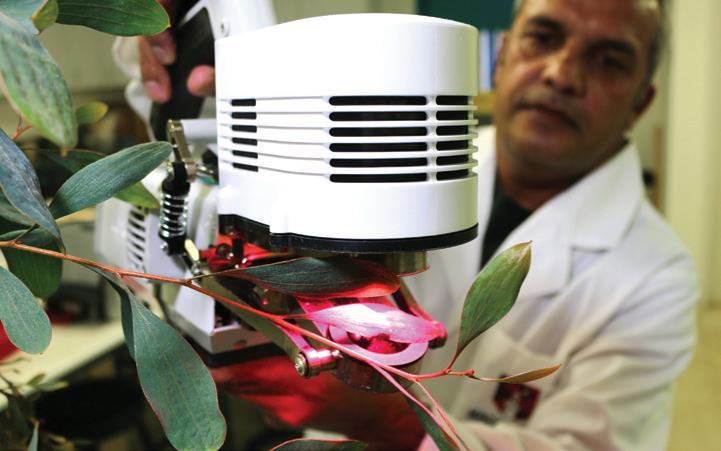

The research that has contributed to the Which Plant Where project was divided into three modules, each investigating unique challenges and opportunities associated with creating and maintaining urban green spaces. Findings from all three modules have been instrumental for the development of the Which Plant Where interactive tool.
Module 1 focused on the creation of maps for each species in the tool to identify areas suitable for the species to grow in, under both current and future climates. These maps were created using state of the art modelling techniques which utilised species occurrence records and climatic data to extrapolate the most suitable growing regions for species under a variety of climate scenarios.
To complement the maps, a database of useful attributes such as tolerances, size, form and biodiversity benefits was created to help users select the most appropriate species for their urban green spaces.
Module 2 related success and failures of urban street tree plantings with local conditions such as climate as well as planting and management techniques to help improve the success of our urban forests. Measurements of plant performance across Local Government Areas with contrasting climates were made to assess plant species’ plasticity to growing conditions.
A series of urban plantings called ‘living labs’ of different complexities (e.g. single/ few species vs mixed communities) were set up in different states across the country to understand biodiversity, shading and cooling co-benefits provided by urban green spaces.
The outcome of these studies is a wide range of resources and bestpractice guidelines on all aspects of

urban greening that are available as part of the Which Plant Where online plant selector.
Module 3 subjected a sample of 113 species and cultivars to controlled heatwave and drought conditions in state-of-the-art glasshouses to help understand the abilities of different plant species to withstand extreme conditions.
These study species were a mixture of well-known and commonly found horticultural species as well as opportunity species that may be well suited to extreme conditions.
Traits such as wilting point, leaf critical temperature, leaf thickness and leaf area were measured to help rate species by their heat and drought tolerance.
Which Plant Where was developed by Macquarie University, Western
Sydney University and Hort Innovation to provide growers, government, landscape architects and urban greening professionals with integrated tools and resources to enable climate ready decision making and to develop resilient green spaces of the future.
Visitors to the site can search and view over 2,600 species with information on their climate suitability for particular locations, as well as their traits, environmental tolerance and growing requirements. Subscribers can also access climate modelling, mapping, co-benefits calculator and palette creator free.
This article is a contribution of the Which Plant Where project, funded by the Green Cities Fund, as part of the Hort Frontiers Strategic Partnership Initiative, with co-investment from Macquarie University, Western Sydney University, the New South Wales Department of Planning and Environment, and funds from the Australian Government.
For more information,
References

In an age where environmental responsibility is no longer a choice but a necessity, Wellington Shire Council has integrated sustainable design principles into its $23 million redevelopment of the Aqua Energy Leisure Centre in Sale, repurposing existing equipment and implementing energy-conserving strategies.
Wellington Shire Council is the third largest municipality in Victoria, boasting an expansive 16 swimming pools across six locations and almost 11,000 square kilometres. This leaves Wellington Shire Council with one of the most extensive outdoor pool portfolios in the state.
Given this scale, it became imperative from the outset to adopt a sustainable approach to the Aqua Energy Redevelopment of the leisure centre in Sale, aimed at both cost-saving measures and the efficient repurposing of perfectly functional equipment within its regional pool facilities. With stage one of the redevelopment almost complete, that is exactly what has been achieved.
The initiative not only represents a strong commitment to environmental stewardship but also demonstrates
forward-thinking leadership, promoting sustainable practices across the organisation and community.
The project objective was clear for Council – to create a modern and accessible facility that promotes health and wellbeing and aligns with sustainable practices without compromising on budget constraints.
In November 2023, as demolition crews commenced their work on the centre, the 25m chlorine dosing system – including a pulsar precision control panel and chlorine feeder – found a new purpose at the nearby Heyfield Outdoor Pool. With a current value of $10,000, this system, designed to automatically regulate water pH and chlorine levels, was a savvy cost-saving initiative for the Council.
Among the salvageable items awaiting reuse are solar panels with an estimated value of $100,000. These panels are ready to find their next home, with potential destinations ranging from local recreation reserves to sporting change rooms, aged care facilities, library and customer service hubs – all earmarked for future enhancements.
Additionally, the strainer basket, which catches debris and prevents clogging in the pool's filtration system, will be repurposed at the Maffra Outdoor Pool.
“We are committed to finding new and innovative ways to make the most of pool equipment that still has life left in it. The decision to repurpose and integrate equipment into smaller pool facilities became a natural choice for us,” said Ian Bye, Wellington Shire Council Mayor.
Despite project constraints such as a partial rebuild of the existing facility and budget limitations, Council has remained
committed to its promise to sustainable practice – notably, the decision to retain significant existing infrastructure, including air handling units, a mere 18 months old.
Indoor grandstand seating is also set to be relocated outdoors at the Sale Outdoor Pool to accommodate more spectators for swimming competitions, while the benches and other furniture have found a new home at the West Sale Pool in Fulham.
By focusing on elements such as insulation, airtightness, and ventilation with heat recovery, Aqua Energy Leisure Centre aims to create a healthier and more comfortable environment for visitors while simultaneously reducing the facility's carbon footprint.
Council’s commitment to enhancing energy efficiency and sustainability is evident in the comprehensive measures implemented across its facilities and assets. A recent initiative includes certifying Project Engineers in ‘Passive House Building Standards’. This official accreditation in sustainable building design makes it easier for project teams to integrate this crucial aspect into future projects benefiting the entire community by focusing on energy efficiency, comfort, and affordability.
Additionally, incorporating passive house design principles reduces a building's overall energy demand, making it easier to transition to other heating sources in the future.
In a notable achievement, the Council now boasts the highest number of certified 'Passive House' designers across the Gippsland region.
Additional strategies, such as reducing thermal bridges and implementing airtightness testing to enhance ventilation efficiency, are currently being utilised.
Incorporating high levels of building insulation along with thermally efficient double glazing, as well as utilising natural daylight and LED lighting, further aids in energy conservation.
The $23 million facility upgrade has been made possible thanks to the Victorian Government, including $2 million from the Local Sports Infrastructure Fund and $10 million from the Community Sports Infrastructure Loan Scheme, $950,000 from the John

Leslie Foundation, with the remainder of the project provided for by Council and funds from the Federal Government’s Local Roads and Community Infrastructure Program.
As a vital community asset for Sale, Council placed emphasis on creating a comfortable building environment, characterised by even temperatures, reduced draughts, and lower noise levels, while also leveraging natural features like proximity to open spaces, including large Redgum trees and nearby Lake Guthridge.
“Our commitment to sustainable design reflects our dedication to creating a positive impact on the environment while providing a state-of-the-art facility for our community,” Mayor Bye said.
Water-efficient fixtures, the reuse of existing solar panels, and installation of new ones with future expansion capability aim to maximise available rebates.
"Our focus extends beyond the construction phase, and we are dedicated to maintaining a sustainable approach throughout the lifecycle of the leisure centre." Mayor Bye said.
When reviewing the Wellington Shire Council Plan, it is clear that four strategic directions and priorities have shaped its work over the past four years:
Environment and Climate Change, Economy and Sustainable Growth, Liveability and Wellbeing, and Services and Infrastructure. It appears this redevelopment has mastered these elements.


The Victorian shire of East Gippsland has emerged as a leader of sustainable tourism and nature-based tourism experiences – and is reaping environmental and economic benefits after becoming the first in the state to achieve ECO Destination recognition from the nation’s peak body for ecotourism and sustainable tourism, Ecotourism Australia.
Spanning the traditional lands of the Gunaikurnai, Bidawel and Monero people, the shire is a natural fit for ECO Destination status. It boasts impressive ecosystems, including the UNESCO World Biosphere Reserve of Croajingolong National Park; the culturally significant Buchan Caves; Raymond Island with its Koala Trail; the Alpine High Country; the expansive Gippsland Lakes; and untamed Ninety Mile Beach.
But attaining the required standards to be recognised as a global leader in sustainable tourism was no easy feat.
In partnership with Ecotourism Australia and WWF-Australia, and with assistance from the Australian Wildlife & Nature Recovery Fund, East Gippsland Shire Council began pursuing ECO Destination Certification soon after the 2019-20 Black Summer bushfires.
Council quickly garnered support from stakeholders such as the Gunaikurnai Land and Waters Aboriginal Corporation (GLaWAC); Victoria's Department of Energy, Environment and Climate Action (DEECA); Parks Victoria; peak regional tourism organisation Destination Gippsland; as well as local businesses and community groups.
Ecotourism Australia visited the shire on multiple occasions, meeting with Council and locals, and carrying out a rigorous assessment spanning 91 criteria, focusing on nature-based tourism, cultural and natural interpretation, education and sustainable community practices. Ecotourism Australia CEO Elissa Keenan announced East Gippsland’s Certification some three years later, at the Inspire East Gippsland Tourism Summit in 2023.
“We’re delighted to recognise East Gippsland as the first ECO Destination in Victoria and a global leader in best-practice sustainability and destination management,” said Elissa Keenan, CEO of Ecotourism Australia.
Today, the certification recognises that East Gippsland as a nature-based tourism destination committed to the active involvement of Council and local businesses in sustainable practices. Through regular auditing, the East Gippsland region is able to maintain its commitment while also implementing the latest best-practices in sustainable tourism.
Other Victorian shires have now started their own ECO Destination Certification process, and the sense among councils is that recognition as an ecotourism and sustainable tourism destination will come to be seen as a must-have in the near future.
The shire joins only six other regions across Australia with this prestigious certification: Coffs Coast, Central Coast, and the Blue Mountains in New South Wales; Bundaberg and Port Douglas Daintree in Queensland; and Augusta-Margaret River in Western Australia.
The shire has established itself on the global map as a destination for a new kind of traveller who aims to tread lightly.
“Being the first in Victoria to achieve this standard is a milestone achievement and we’re proud to have supported this region, in partnership with WWF-Australia, through a bushfire recovery fund, to help them build back better,” Ms Keenan said.
“Australia is a destination of nature and ecotourism experiences and it’s important that destinations adopt a
sustainable management focus to meet visitors’ growing demand for responsible tourism as well as to ensure ongoing positive contributions to the environment, culture and community of their region.
“East Gippsland’s ECO Destination Certification ensures sustainable tourism remains part of the story of the region and inspires local businesses and the community to maintain good practices and implement sustainable tourism standards,” Ms Keenan added.
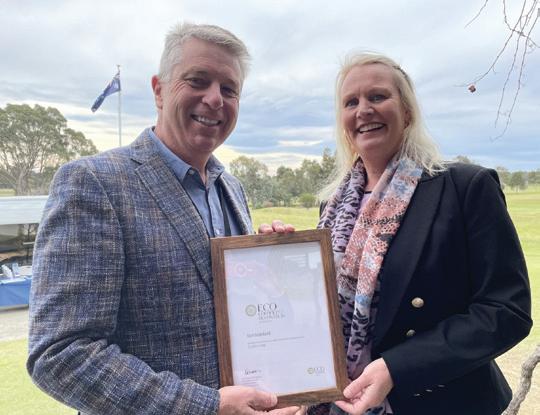
Some eight months after achieving ECO Destination status, Council now sees the certification as a natural extension of its ongoing commitment to responsible tourism.
Mayor Cr Tom Crook said that the certification, while challenging to attain, has already proven vital in showcasing the region to both a national and global audience, with the wider Gippsland area achieving an uptick in visitor numbers of around 22 per cent on the previous year (as at September 2023) in the most recent audit by Tourism Research Australia.
Tourism awards have also followed, with Lakes Entrance on the Gippsland Lakes celebrated as a finalist at the 2023 TAC Victorian Top Tourism Town Awards; marketing body Destination Gippsland named as the gold medal winner in the Qantas Australian Tourism Awards for tourism marketing and campaigns “All Kinds of Wonder”; and won the Australian Marketing Institute Awards for Marketing and brand revitalisation.
“East Gippsland has long been offering world-class, naturebased outdoor experiences and official recognition of the region’s commitment to sustainability will bolster its visitor economy,” Destination Gippsland CEO Terry Robinson said.
“Ecotourism has become one of the fastest-growing sectors of Australia’s tourism industry. Travellers are hungry for sustainable tourism experiences and ECO Destination Certification will give East Gippsland’s nature-based tourism sector and the region a well-earned boost.”
In addition to Council gaining certification, several East Gippsland local businesses are undergoing the ECO Certification process, which certifies nature tourism products at global best-practice standards against the four pillars of sustainability: environmental impacts; socio-economic impacts; cultural impacts and sustainable management.
Buchan’s commitment to preserving its natural heritage has seen it emerge as a key tourist draw for eco-friendly tourists. The culturally significant Buchan Caves Reserve, on Krauatungalung Country, features limestone formations that date back some 400 million years. The caves reserve is ECO Certified by Ecotourism Australia and committed to sustainable practices and provides high-quality nature-based tourism experiences that have made it a must-visit destination.
While the town centre is open for business, the caves reserve is temporarily closed due to a recent flooding event, other wonders, such as nearby W Tree Falls with its cascading two-tier 20m waterfall, the ruggedly beautiful Snowy River National Park and Little River Gorge – Victoria’s deepest at 600m deep, offer wild adventures an easy drive from town.
North of Buchan, adventurers can delve into the wonders of the Snowy River National Park, experiencing the diverse ecosystems that make East Gippsland a haven for sustainable tourism.
With projects such as the redevelopment of Buchan – a process that predates the renewal of the area following the floods – a 121km network of mountain bike trails in Omeo, Timber Transition projects that support towns to transition away from native timber harvesting, and Council-backed tourism forums, expos, events and advice, East Gippsland's tourism sector points toward a promising future.
In the pursuit of a sustainable future, East Gippsland has positioned itself as a global leader in eco-friendly travel. As travellers seek authentic and responsible experiences, the region, guided by its ECO Destination Certification, stands ready to showcase the perfect balance between a healthy environment and a robust tourist economy.
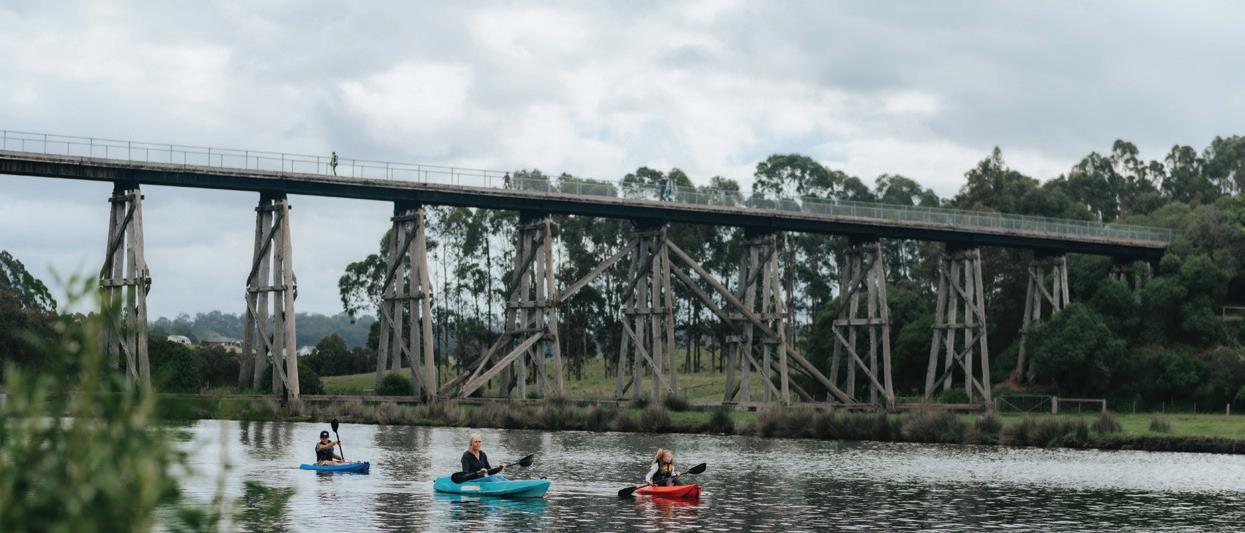
Providing professional diversity and inclusion training, podcast production and opportunities for on-air sponsorship, Australia’s LGBTQIA+ community broadcaster JOY Media is working towards a more inclusive Australia. As part of the organisation’s remit, JOY Media works directly with councils around Australia to support constituents, team members, and stakeholders to be more inclusive.
JOY Media is Australia’s only not-for-profit rainbow community media organisation. With a growing team that spans the full spectrum of the diverse LGBTQIA+ rainbow, JOY has the lived experience of both the challenges and beauty encompassing rainbow communities.
When JOY launched in 1993, its original purpose was to bring together a devastated and isolated gay community ravaged by the AIDS crisis. JOY has since evolved to inform, entertain, and empower LGBTQIA+ communities and allies across Australia and the world, with the sole purpose of building a more inclusive Australia.
Now powered by more than 160 volunteers and led by a small leadership team, JOY’s presenters, producers, newsreaders, creators and curators deliver quality community media, every hour, every day of the year. This charitable work keeps listeners connected, and allows the community to learn from each other and provides a voice to those often missed on an increasingly chaotic world stage.
Social procurement has become increasingly popular amongst councils seeking to generate added value to society through their purchase strategies, which is certainly an outcome of working with JOY. Providing professional services that include diversity and inclusion training, podcast production, on-air sponsorship and technical services has

allowed JOY to use its experience and excellence to support the important work of public institutions like the Arts Centre Melbourne, services like Matchworks Employment’s Job Fair, and governments at all levels including Bayside City Council, City of Port Phillip, City of Yarra, Brimbank City Council, Hobsons Bay City Council, Maribyrnong City Council and the Department of Families, Fairness and Housing.
Seeking to help build a more inclusive Australia on a practical level, while working to ensure its own sustainability into the future, JOY Media has begun offering LGBTQIA+ focused diversity and inclusion training to council groups, businesses, and community organisations. This work, and the direct positive effect it has on those who take part, flows directly from the participants to their community.
With many councils making conscious efforts to work towards inclusivity, partnering with JOY Media and learning from their deep connection to the LGBTQIA+ community can be a powerful way to effect positive change.
Awareness days like IDAHOBIT (International Day Against Homophobia, Biphobia, Intersex Discrimination, and Transphobia) in May, Wear it Purple Day in August, and November’s Trans Awareness Week and Trans Day of Remembrance have become vital touchpoints for councils to show that LGBTQIA+ residents are welcome in their community, and are perfect opportunities to engage JOY Media to facilitate training.
“We know that councils want to be ready in advance of those prominent awareness days,” says trainer and JOY broadcaster Triana Butler. A proud trans woman, Triana has trained many of JOY’s clients, sharing her own life experience to illustrate some of the challenges trans and gender diverse people face.
“Some councils are developing their toolkit, or seeing where they could improve their processes or work better with employees, but often times they come in already making strides in inclusion for their community and want a refresher, or have one or two really burning questions they want to explore.”
Fiona Newton, head of JOY’s education and training social enterprise JOY Academy, designed the program to be customisable for groups of all sizes and types. “The training services we offer can be adapted to suit any need,” she said. “We’ve run sessions with council executive teams, as well as teams in public-facing positions where they interact with constituents on a daily basis, like library staff and maintenance teams.
“We were engaged by one particular local council in 2023 who wanted to enhance their leaders’ capabilities in promoting LGBTQIA+ initiatives, and we ran a series of training workshops for them and their senior executive team,” she said. “The feedback we received from them after the sessions was overwhelmingly positive; they found the way we delivered the sessions to be very engaging and approachable, and commented on how well received the sessions were by their team.”
Studies continue to show that diverse workplaces are more innovative, approach challenges from different perspectives, think more creatively, make better decisions and are more productive and happy. Teams wanting to excel benefit from hiring and retaining diverse teams. Breaking down unconscious biases goes a long way to ensuring workplaces continue to innovate.

While the term “safe space” might be a term you’ve heard, the trainers in JOY Media’s D&I training sessions seek to go one better. “With these sessions, we want to create a brave space,” said Ms Butler. “A space where people feel brave enough to share of their own lives, and be brave enough to say ‘I don’t know anything about this, but I want to know more so I can get it right.’”
With the increasing hostility of social media bringing criticism of organisations into the public sphere, organisations are increasingly worried about being “cancelled” or needing damage control. Being aware of the issues facing LGBTQIA+ people and common misconceptions about the community can be important to mitigate risk.
JOY’s diversity and inclusion training is run by trainers with lived experience; each session is led by a person with sexual diversity, and another with gender diversity.
“We made a deliberate choice to ensure that members of our communities lead the training, because they can answer questions for participants confidently and from personal experience,” explained Ms Newton. “Often, what holds back people from learning more about our communities is that they haven’t met anyone from the community yet, or they don’t feel comfortable asking their question of the people in their life because it feels too personal, or because they don’t want to ask the ‘wrong’ thing. We make space for those tricky questions, while ensuring that anyone in the room who might be LGBTQIA+ doesn’t feel unsafe.”
Diversity and inclusion training is just one way that JOY is able to serve local councils, businesses, and organisations. JOY’s podcast production service can be another effective, engaging and personal way to keep constituents feeling connected to council.
“That’s the magic of podcasts,” shares JOY’s Production Coordinator, Elliot Attard. “When someone taps into a podcast, they are there to listen to what you have to say, and when you do it right, it feels like you’re speaking with the listener one-toone, like a phone call, or sharing a cup of coffee together.” To

The average person will spend a third of their lives at work. While our jobs can provide a sense of purpose, fulfilment and opportunities for growth, they can also present challenges that negatively impact our mental health. From demanding workloads to organisational stressors, the risks of experiencing mental health issues are ever-present.
Mental illness is now the leading cause of absenteeism and long-term work incapacity across the nation. New data from Safe Work Australia shows a 36.9 per cent increase in serious workers’ compensation claims between 2017/18 and 2021/22, with the median time lost totalling more than four times that of time lost to physical injuries and illnesses.
The human cost of mental ill health is high – and the economic cost is too: lost productivity, staff absenteeism and employee turnover is now costing companies an estimated $39 billion each year.
As such, managing psychosocial hazards in the workplace is as much about safety of staff as it is about creating an environment that drives increased productivity, staff retention and reduced costs.
So, what can organisations do to get on the front foot when it comes to workplace mental health? First, they need to understand that they have a legal obligation to manage the mental health risks that arise from work.
Those risk factors can be grouped into the following three categories, says Dr Aimee Gayed, Postdoctoral Research Fellow at the Black Dog Institute: ∞ Organisational factors, including what Dr Gayed calls the ‘psychological safety climate’, which is the extent to which a workplace values staff mental health and whether or not there are stigmatising attitudes towards it ∞ Team-level factors, including the nature of the working environment and the relationships between individual staff members, their colleagues and superiors. Are these relationships supportive? Is action taken to prevent bullying?
∞ Job-level factors, including individual’s role and responsibilities, the level of control they have over their work and the demands that employers place on them
Establishing a mentally healthy workplace requires a holistic approach that acknowledges and addresses all three of these categories. It’s also imperative that organisations lead from the top down.
“Researchers have identified five key strategies, including designing work to minimise harm, enhancing personal resilience, promoting early help-seeking, supporting recovery and return to work, and building organisational resilience,” Dr Gayed says.
“Managers play a pivotal role in implementing these strategies, underscoring the importance of equipping them with the necessary skills through evidence-based mental health training.”
It’s easy to recommend a cultural overhaul, but the how of implementing these strategies at work can feel overwhelming, particularly in a challenging economic climate where many organisations are already trying to do more with less.
That’s where skills-based mental health training, particularly training that targets people in leadership roles, can help. Equipping staff with the skills and confidence to identify, talk about and respond to mental health concerns within their teams is one of the most effective steps businesses can take to mitigate psychosocial risk.
Murrindindi Shire Council is one organisation that’s investing in mental health training for their staff. Councils face unique workplace-related psychosocial risks such as job pressures and a diverse work environment that sees staff working across multiple locations.
In the aftermath of COVID-19 lockdowns, the Council’s Governance and Risk team noticed a decrease in employee wellbeing across the organisation. In response, they enrolled the Council’s leadership team into two workplace mental health training programs delivered by Black Dog Institute.
“The content, face-to-face delivery and cost was a significant reason that we went with Black Dog Institute,” says Dee Welch, the Council’s Occupational Health & Safety Coordinator.
Called Managing Team Wellbeing, this three-hour workshop training teaches managers to:
∞ Identify behaviour changes that can indicate psychological distress
∞ Lead effective conversations about stress, mental health and wellbeing
∞ Understand, access and connect staff to a range of supportive resources
∞ Support staff members to return to work after a mental health-related absence
∞ Promote individual and team wellbeing in the workplace
The program was developed from Black Dog Institute’s randomised control trial to measure whether manager mental health training can reduce the occupational impact of mental health disorders and reduce sickness absence among employees. Results demonstrated a 10:1 return on investment through a significant reduction in sickness absence among the managers’ employees. It also improved managers’ confidence in and their likelihood of contacting employees off work due to mental health problems.
For the Murrindindi Shire Council Team, the results were remarkable: after completing the training, 100 per cent of participants felt confident identifying the warning signs of mental ill health (compared to 39 per cent prior) and discussing rehabilitation/return-to-work plans with staff members on sickness absence (compared to 60.6 per cent prior).
Further, 100 per cent of participants said they were likely to engage in regular, one-on-one catch ups with staff to monitor work and wellbeing and to implement workplace adjustments or appropriate graduated return-to-work plans for employees experiencing mental health problems.
Murrindindi Shire Council has now signed their leaders up for further training, Managing for Team Wellbeing: Navigating Conversations, an advanced workshop that builds on skills from the foundation program, to build skills in performance management and discussing mental health challenges.
Managing for Team Wellbeing and Navigating Conversations are just two of a suite of Black Dog Institute mental health training programs that offer practical prevention and early intervention strategies.
Others include Protecting and Promoting Mental Health at Work, which targets senior and team leaders looking to understand the risk management process and apply hazard controls, and Recognise and Respond – Suicide Prevention, an e-learning program that equips all team members with the skills to save a life.
Collectively, these programs draw on more than two decades of Black Dog Institute’s world-leading workplace mental health research. Course content is regularly evaluated to ensure that the training effectively meets key objectives of managing mental health and responsiveness to issues in the workplace.
To find out more about how Black Dog Institute training can support your organisation, please visit the Black Dog Institute website.


As the number of Australians aged 65 and over is projected to double over the next 40 years1, communities will likely experience growing demand for in-home aged care services. However, with the Federal Government’s plans to reform in-home aged care funding, many Australian councils are putting such programs on the chopping block. Mount Alexander Shire Council is among the exceptions, having voted last year to maintain its commitment to provide services to over 900 of its residents.
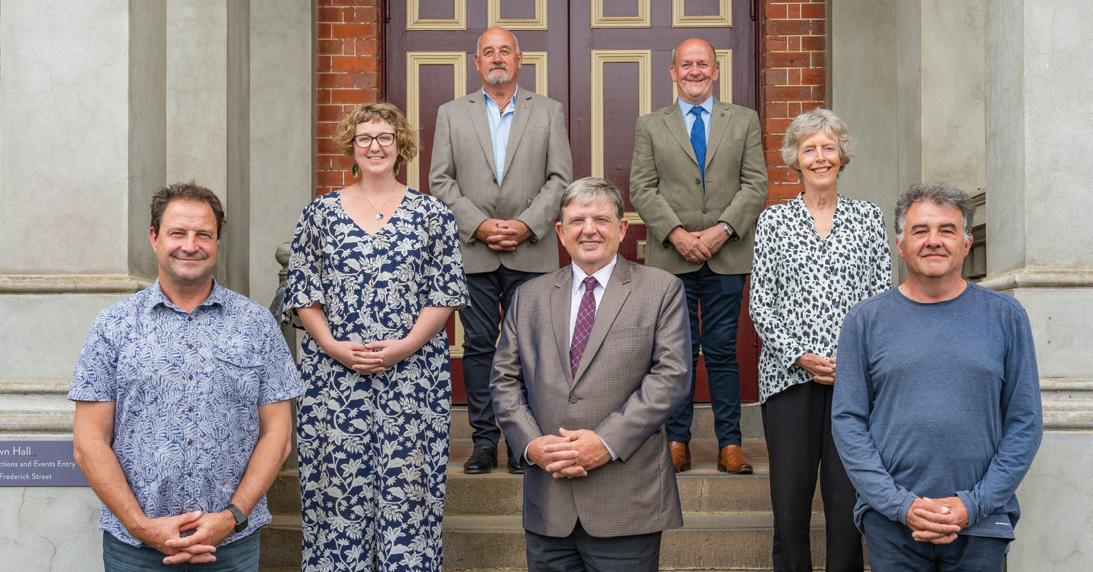
With Australia’s life expectancy continuing to increase and fertility rates continuing to decline, the country faces an ageing population. Over the next 40 years, the number of Australians aged 85 and over will more than triple, and the number of centenarians is expected to increase six-fold2.
This demographic shift will have a profound impact on the aged care sector, which is already grappling with financial challenges and workforce shortages. The industry is undergoing significant reform following the 2021 Royal Commission into Aged Care Quality and Safety.
Under the Federal Government’s current model, many councils receive funding to deliver the Home Support Program (CHSP). The CHSP provides entry level services focused on supporting older people to maintain residence within their homes and connection with the community. Services are provided on a short-term or ongoing basis and include allied health and therapy services, personal care, domestic assistance, social support and home modifications.
However, from 1 July 2027, a new program called the In Home Support Program will replace CHSP services and absorb a range of other aged care programs. This will significantly change the funding and delivery of current aged care services delivered by many local governments, leading to a growing number of councils deciding to withdraw from being an aged care services provider.
Mount Alexander Shire Council has been delivering aged care services under the Home and Community Care program since 1984.
Today, Council has approximately 50 staff members who deliver aged care services to roughly 900 residents in the shire. These services include personal care, home care, shopping, delivered meals, respite care, social support programs and more.
Mount Alexander Shire Council Mayor, Matthew Driscoll, said, “Over the course of the last forty years, the feedback on those services from clients has been overwhelmingly positive.
“Council's aged care services help people by providing companionship, and support residents to maintain their independence while living at home.
“Council also boasts a committed pool of staff, which is a key factor in contributing to make it an excellent service, and one that people can, and do rely on.”
Alongside federal support, Council receives funding from a range of sources including the Victorian Government, Home Care Package Providers, Care Finders and Veterans Home Care and Home and Community Care Program for Younger People.
Mayor Driscoll said Council conducted an extensive review of its program in response to the Federal Government’s recent reforms. This led to the decision to not only continue to provide its services but also to expand Council’s offerings.
“The review began in January 2023, and involved hearing from current clients and their families, consultation with staff and volunteers, benchmarking with other local government areas, financial analysis, risk analysis, and more,” Mayor Driscoll said.
During the review process, Council gathered feedback from more than 350 of its current clients, finding:
∞ 76 per cent of respondents reported that the service they are currently receiving from Council fully met their needs
∞ 86 per cent of respondents stated their preference to stay with Council for care services
∞ The familiarity and professionalism of care staff was consistently raised as a key value proposition of the service
“While it is an incredibly complex matter, the high standard at which our services are delivered, and the consequent respect and appreciation held by more than 800 clients for those services, has been enormously important in the decision-making process.”
Mayor Driscoll said Mount Alexander Shire’s residents have welcomed the decision to continue providing aged care services.
“Throughout the review of our aged care services, we kept our community and clients informed. Despite this though, there was some nervousness as to what the future would hold.

“The morning after the Council meeting, staff began the process of informing current clients and their families of the decision which was received with joy, and much relief.
“During our review, current clients and their families overwhelmingly told us how much they value the aged care services that we offer.
“Older residents told us they feel cared for and respected by our staff – and that’s incredibly important to us.”
Mayor Driscoll said all the staff take great pride in their role and thrive in the knowledge that they are giving back to the community.
“The staff go above and beyond when caring for the clients which was highlighted within the feedback.
“Compliments for the staff and their work continue to be received.”
Mayor Driscoll said one of the biggest challenges facing Council is the nationwide workforce shortage. Job vacancies in healthcare and social services remain very high compared to other industries, underscoring the need for workers.
However, Council is taking action to ensure the workforce continues to grow to meet demand.
“The Council service is offering traineeships for people interested in undertaking a Certificate 3 in Individual Support, enabling people new to the sector to gain a new skill set to provide a good quality service. This is proving effective in securing staff.”
Moreover, the aged care sector was hard hit by COVID-19, and Mayor Driscoll said the lingering presence of the virus means it remains a concern.
“Infection Control guidelines are in place to reduce the transmission. However, staff like the rest of the community are susceptible which places pressure on delivering services.”
While there are many difficulties facing aged care providers, Mayor Driscoll said the increasing demand for services offers an opportunity for councils to become local leaders in the sector.

Mount Alexander Shire Council is in the process of registering to become a Home Care Package Provider to ensure complex clients have local case managers/partners.
“This will ensure we can respond to clients with higher needs in a timely manner. In recent months Council is now supporting the Department of Veteran’s Affairs clients in Central Goldfields.
“The aged care system is incredibly complex for older adults to navigate so having a local presence will continue to facilitate support for older adults to gain access to the services.”
Federal-funded aged care services delivered by Council will incrementally transition to the new In Home Support Program model.
“For current clients, the service is not going to look any different in the short-term,” Mayor Driscoll said.
“Down the track, Council will explore delivering extra services as well, and any expansion will be done in a sustainable way and in line with client demand.
“Council is confident and excited about the opportunities that await us, under our plan for aged care services in the shire.”
2
1


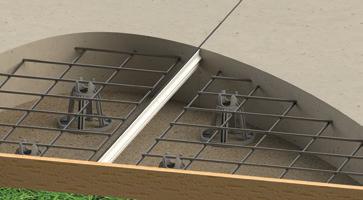


Could regular exercise at local council recreation centres be the key to improved mental and physical health outcomes for communities, and financial benefits for the councils that serve them? A recent study into the benefits that local recreation centres provide suggests that this is absolutely the case.
An aquatic and recreation centre in the City of Cockburn, in Perth’s southern metropolitan region, saved its community almost $30 million in health costs across the 2021-22 and 2022-23 financial years.
This reduced the risk of ten major acute and chronic health conditions and diseases including mental health conditions, cardiovascular disease, type-2 diabetes, breast and bowel cancer and dementia in the community.
The mental health benefits of regular physical activity were the standout data indicator from ARC’s active membership, accounting for nearly 32 per cent of social value in 2022-23.
City of Cockburn Head of Recreation Infrastructure and Services, Andrew Tomlinson, said while people still questioned the value of exercise, especially if it involved a financial
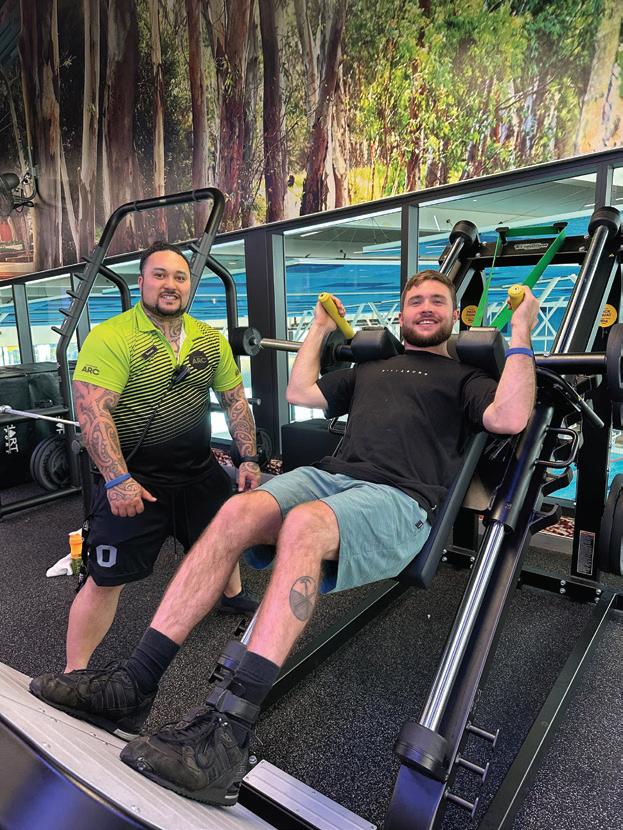

investment, science showed regular physical activity had the ability to change and save lives.
In October 2023, Australian Bureau of Statistics Head of Health Statistics Linda Fardell said more than two in five Australians (42.9 per cent) aged 16-85 years had experienced a mental health disorder in their lifetime, with one in five Australians (21.5 per cent) experiencing a mental health disorder in the previous 12 months.
The study gave insights into how people managed their mental health, with nearly a quarter of all Australians aged 16-34 years (22.9 per cent) having at least one consultation with a health professional for their mental health in the last 12 months.
Just ask Sanford Gadomski, who became an ARC member in 2018 while recovering from a serious car accident.
He credits the facility with changing his life, enabling him to improve his physical and mental health with a gym circuit five days a week.
“If I didn’t get to the ARC my health would plummet within a week, I’d go backwards very quickly,” Sanford said.
The father of two young children had to rebuild his life from scratch after his car rolled several times before hitting a tree in 2017, spending months in hospital, including stints in a coma.
“Some mornings I feel really down, but I know I’ll feel better after I finish at the gym. Once I get on the road heading towards ARC, I know everything will be okay,” he said.
“Yes, regular exercise is really important for my body, but it’s the mental health benefits that really make a difference to me every day.”
Mr Tomlinson said Cockburn ARC was designed as part of a partnership between local, state and federal government, the Fremantle Football Club and Curtin University.
“Adhering to a business model allows the City to consistently provide cutting edge facilities and services to drive social value at the at ARC,” Mr Tomlinson said. “This includes equipment and facility upgrades and expansions that attract and sustain regularly active members, and provides an attractive alternative to privately operated gyms.
“It was a conscious departure from a common scenario for local governments, which are expected to provide essential community services like recreation centres in the knowledge they would often run at a loss for some time or in perpetuity, with the aim of eventually breaking even.”
The ARC, including its spin studio, gym and group fitness areas, will undergo a major revamp in 2024-2025.
For the past two years, Cockburn ARC has partnered with ActiveXchange, a Sydney-based company that provides data intelligence to help organisations and facility operators make evidence-based decisions to grow active and healthy communities.
Aligned with Federal Government and Australian Institute of Health and Welfare guidelines and in collaboration with KPMG, ActiveXchange’s social value model captures data that shows a predicted dollar value saving of members’ activity levels and how it reduces the risk of acute and chronic health indicators on a community-scale.
In 2021-2022, ARC had 1.17 million visits, and 1.27 million in 2022-23.
Opened in November 2023, the Blacktown Exercise, Sports and Technology Hub was envisioned as a facility within Blacktown International Sports Park that uses technology, research and a multidisciplinary approach to positively impact community health, research, sporting performance and rehabilitation. Here, Project Director Neil Gibson shares his thoughts on the concept of the community leisure centre, as well as some of the thinking that informed the direction the development of this new facility took.

Leisure. What does that word conjure for you? The popular 1991 album by Blur; an iconic speech by Spud in Trainspotting who declared, ‘my pleasure is in other people’s leisure’ during his ill-fated job interview; or, perhaps, more simply, time off work?
Our interpretation of what leisure time means has changed over the past half century with its use overtaken by terms such as ‘exercise’, ‘family time’ or ‘wellness’. Historically, cities protected areas of green space from urban development to ensure that residents had somewhere for leisure activities.
Roman cities provisioned public baths in these spaces, some of which are still in use. With the march of time, green space and public baths were supplanted with leisure centres, buildings that included swimming pools, changing rooms, cafes, and indoor sports halls.
Leisure centres, however, are in crisis. Edinburgh Council (in Scotland) is contemplating the closure of eight leisure centres because of financial pressures. Closer to home, a study highlighted that 40 per cent of Australian swimming pools will reach the end of their lifespan this decade with an estimated $11 billion required to replace or refurbish the aging infrastructure.
Many public infrastructure projects built 50 years ago no longer represent a benefit to the community. Contemporary thinking has evolved, and leisure centres of the future are unlikely to look like their predecessors. This is the opportunity presented to local councils who have received funding to refurbish or build new facilities.
So, how will these developments reflect the changing needs and interests of communities, while developing a business plan that reduces subsidies and provisions for long term maintenance and repair?
Refurbishment or upgrade projects must battle the temptation to retain what is already in situ. There are often good reasons for this. Existing users will make a strong case for facilities to be retained, irrespective of the broader level of use within the community. It is also hard for people to imagine a facility working in a different way; inertia exists in all organisations with little incentive to rock the boat and challenge the status quo.
If we don’t replace existing facilities, someone must decide what would represent better value for money and result in greater use. This is not an easy task, even when supported by
industry experts. This is not a new challenge. Since the mid 1900s, companies have invested time and money in ensuring they do not miss opportunities to innovate their working practices, fall behind the competition and become paralysed by ‘group think’.
Business process reengineering, or BPR for short, helps organisations think in a new way. It was intended to challenge traditionally held views and, where appropriate, tear up the rule book in favour of something that would work more effectively. Adopting some of the principles of BPR may allow us to think more broadly about what leisure centres are and could be in the future.
Leisure centres do not have to be limited to indoor sports halls and swimming pools. The opportunity to attract businesses who provide additional community benefit should not be missed. This might include the co-location of health centres, non-prescribing pharmacies, education providers, counselling services and retail stores such as book shops, hairdressers, sports medicine providers and community advisory services.
Families will see real benefit in being able to access private education offerings such as language classes in the same place their children do swimming lessons, or in being able to see a doctor in the same place as their children can use a playground. In addition to the additional social benefit that co-locating businesses in leisure centres brings, there is also a financial incentive. The rental income can help to offset the long-term subsidy that Councils or other operators incur.
Current initiatives aim to open school playgrounds and sporting fields outside traditional school hours, provisioning accessible facilities for the whole community. Leisure centres should follow suit. Increasing permeability and allowing free access to at least some facilities delivers a social benefit for those to whom the entry fee poses a barrier. Strategies to facilitate this might include positioning the reception and associated turnstiles to allow free access to end of trip facilities. It may include positioning bike racks near external seating and the cafe. Both will attract those who enjoy walking or cycling as a starting off point or somewhere to stop along their route.
For many children, splash pad facilities will be their first experience of water play, and represent something that can be positioned so that access is free and unrestricted, in the same way that community playgrounds are. Whilst this represents an ongoing cost, the social benefit it provides cannot be measured in monetary terms alone. In Australia especially, providing access to water facilities during the hot summer months as a heat refuge, while also introducing children to water in a safe environment cannot be underestimated. Further, the more families use a facility and associate it with providing a societal benefit, the more likely, through habit alone, they will be to use chargeable facilities as their families get older.
Physical literacy underpins the pursuit of an active lifestyle and is best learnt during the formative years of childhood. It includes the ability to run, jump, land, throw, twist and hop, skills developed through the unstructured play that occurs in playgrounds. New developments may consider how such areas can be included in their design and free to use by the

community. This may be outside the facility or, for the more adventurous, form part of the building's structure.
A fantastic project undertaken by Buildcorp at Santa Sophia Catholic College in Sydney saw a large-scale play structure designed into the fabric of the building, allowing students to traverse levels by climbing, sliding, hanging and swinging. It has made informal play and physical activity part of the students’ daily habits, something research tells us is an important step in achieving positive long term health outcomes. There is no reason why leisure centres cannot follow suit.
Despite changes in the number of leisure activities and sporting pursuits, leisure centres haven’t followed suit; we still see generic indoor sports halls lined for basketball, volleyball and other court sports, and pools for lap swimming. Whilst there is a demand for these facilities, their participation rates are dwindling and have been for some time. The range of activities for people of all ages to take part in are as diverse as they have ever been, which new facilities should reflect. We have seen a sharp uptake in sports such as walking football, tag rugby, pickleball, yoga, gymnastics and dance. So how can new leisure centres accommodate this shift in how the community is choosing to be active?
Smaller, modular rooms that can accommodate activities like dancing, yoga or pilates should be considered, with fixtures and fittings reflecting the aesthetic nature of the activities. Where indoor sports halls are unavoidable, technology that allows court lines to be projected onto the floor should be preferred to permanent markings. As much as possible, spaces should be flexible and able to accommodate a range of activities. We do not yet know what we will be doing with our leisure time in twenty years.
The largest growth area in how people spend their leisure time is online gaming and streaming services on television. E-gaming is the fastest growing sport and, in time, will appear in mainstream events like the Olympics. Despite this, the

inclusion of facilities catering for gamers in leisure centres is lacking, even in those built more recently. Spaces that provide screens where people can connect their device would be a popular choice for participants of all ages. The room might also double as a space where people could congregate to watch movies and TV programs, especially during the day when leisure centres tend to be quieter. Although many people will have this capacity at home, lots of people don’t, or would welcome the opportunity to do so with company. Leisure centres, with some reimagining of their raison d'etre, can make a significant contribution to reducing the negative health consequences associated with the growing levels of loneliness and isolation.
The 50m swimming pool is a mainstay of leisure centres, especially in Australia. Few people, however, compete at swimming nor will use the facilities for lap swimming. Those who do would be willing to travel; installing a 50m pool in each new development may not, strategically, be the best course of action.
So, what are the alternatives? Recent developments have included program pools designed specifically for youth and adult swimming lessons. These pools can also cater for aqua classes that are popular amongst older user groups and those recovering from injury, as well as being a safe place for adults who are not themselves confident swimmers to take their children.
Other facilities have incorporated free play areas that mimic ocean pools, such as Gunyama Park Aquatic and Recreation Centre in Zetland, Sydney. These pools allow families to play in bodies of water that cater for different levels of competency, moving from the shallower to the deeper areas as they become more confident and proficient in the water. Incorporating ample seating into such pools is also beneficial as it provides parents who do not swim themselves or who prefer not to go into the water a place from which to supervise their children. Pools like this should not be just an add on to the traditional 50m pool but considered as an alternative.
Memberships for use of gym facilities at leisure centres are often a significant component of their revenue plan. The level of competition in this space, however, has grown exponentially with a range of budget and boutique gyms now available, often with greater flexibility in terms of membership options and opening hours. Should public leisure centres compete in this space? Why create a gym when the community can access a very similar offering in the private sector at a competitive

rate? Perhaps it’s better to use this capital budget to create new spaces that the private sector does not offer?
New developments cannot answer every question raised here. Indeed, in some areas, the traditional idea of a leisure centre may still be valid. In others, however, a more strategic approach will be warranted. This will involve an assessment of similar facilities in the surrounding area. It will include community consultation regarding which facilities there is the greatest demand for, or, which they believe are under supplied. As a starting point, a change in language may help facilitate some of this analysis.
If we continue to refer to leisure centres as such it will reinforce the traditional stereotypes of what these facilities are and what they look like. Equally problematic is when we call them aquatic centres, removing the potential to question whether a pool is required or not.
In the late 1800s Jane Addams established the Hull House project in Chicago. The project provided a settlement for the promotion of education, practical skills, cultural exchanges, medical services, exercise, play and political debate. It was, in modern day terminology, the combination of leisure and community centres. The Hull House project captured the essence of a cultural centre as somewhere the community could grow, recover, play, share stories and be cared for.
Perhaps then, what we need are more cultural centres which combine place making, the arts and social enterprise with spaces where the community can be active. Achieving this may be the best way to future proof new developments for the next 50 years. After all, history does have a habit of repeating itself.
Blacktown City Council operates five swimming centres with fifty metre pools, two of which are year-round leisure centres, and three are seasonal. Two of these will soon be upgraded to modern community standards. Council plans to build a new facility in Marsden Park, and will proceed when funding becomes available.
In B2B, the sales cycle is long. You’ll always have people at different stages of the buying cycle, so your marketing needs to be always on.

Decision makers in the council industry gain information from a wide range of sources. The team at Council are able to provide a complete range of marketing solutions:
● Brand building
● Educating the market
● Generating leads
● Creating engaging content
● Managing your social media and SEO
● Setting up marketing funnels
We also have a team of editors, designers and marketing experts who specialise in the council sector and can help make the most of your campaign.
Scan this code to learn how we can help you ensure your marketing is always on.
www.councilmagazine.com.au


The City of Launceston has expanded its engagement to a whole new audience thanks to the universally popular video game Minecraft. By developing downloadable Minecraft maps of Launceston, Council has been able to engage with a community group traditionally difficult to interact with and gain insights from – children.
The idea to develop downloadable Minecraft maps of the Northern Tasmanian city was born in 2020 when a staff member created a Minecraft world, based on the Council's 2016 3D model of the city, as a passion project.
City of Launceston Smart Cities Project Officer Cameron Smith said the project debuted quietly at a 2020 student careers fair.
"Unfortunately at the time it didn't get a great deal of attention as our stall also had a remote control lawnmower, which the children found much more interesting," Mr Smith said.
"The original 2020 version covered the whole city and didn't have the colours and textures that we've been able to add to our current Minecraft worlds, which meant it was harder to recognise landmarks and easier to get lost."
The Council typically uses 3D modelling as part of its work in many areas including assessing planning applications across the city and emergency management, and having undertaken new 3D mapping of Launceston in 2022, it made sense to update its Minecraft maps.

Mr Smith said the Council had utilised new technology in its 2022 survey, which meant it was a relatively simple process to create new Minecraft maps using the data captured.
"We were able to build the tool cost effectively using the 2022 3D City Model as a starting point, along with a sophisticated data translation tool called FME Desktop, which is used to convert data into different formats," he said.
"From there, specifics were added within the game to make it as accurate and recognisable as possible. The Council was also able to leverage off a partnership with Esk Spatial to help develop the Minecraft worlds."
Esk Spatial is a leading geospatial company based in Tasmania with expertise in mapping and data.
"As a result we created three new Minecraft maps, which feature iconic Launceston locations Riverbend Park, City Park and the Cataract Gorge First Basin," Mr Smith said.
"The biggest difference with the new maps is that they represent the actual colours of features we see in Launceston.


"So for example, the big yellow Sky Walk in Riverbend Park is a big yellow Sky Walk in the newest Minecraft map, the green grass in City Park is green in the Minecraft map, and the stone barbecue shelters at the First Basin are stonecoloured in the game."
The Council tested the maps out with approximately 800 Grade 3 to 6 students using four PCs and three iPads during National Science Week in August 2023.
Students were encouraged to identify their favourite parts of parks and showcase their ideas by building them in the game.
"The students built interesting things, mostly buildings or mines, however some put in quite a bit of thought into it – for example, one Grade 4 student from Invermay Primary School built a new toilet and shower facility at Riverbend Park to support people who are homeless," Mr Smith said.
"Another pair of students extended the flood levee around Riverbend Park as they had heard that there was a chance that it would flood.
"Another trend started where children would add new animals to City Park that they would like to see, in addition to the monkeys we already have.
"Council staff also took the opportunity to use the game as a conversation starter, asking questions about what the children would like to see in playgrounds that are being renovated
– feedback that may influence what we do during our upcoming City Park and Punchbowl Reserve playground renovations."
Mr Smith said the ability to so effectively engage with young people was a new and invaluable experience and outcome resulting from a Council project or initiative.
"Children are, for obvious reasons, a group the Council would traditionally struggle to engage with; children are unlikely to complete one of our surveys, write to the Council or attend one of our regular engagement workshops – but they are likely to play a game such as Minecraft where they can build something new and show us what they like and what's important to them," he said.
"They respond very well to games and visualisation tools that allow them to consider their world from a new perspective.
"We know a number of schools across Tasmania have now downloaded these maps and used them in the classroom, including St Thomas More's Catholic School which has identified Minecraft education as an effective teaching tool, building creative problem-solving skills and systems thinking.
"These maps are a good example of how Launceston's data can be visualised in different and exciting ways."
As a result of media exposure around the student engagement, the City of Launceston has since had members of the local, national and international Minecraft community reach out to share their builds.


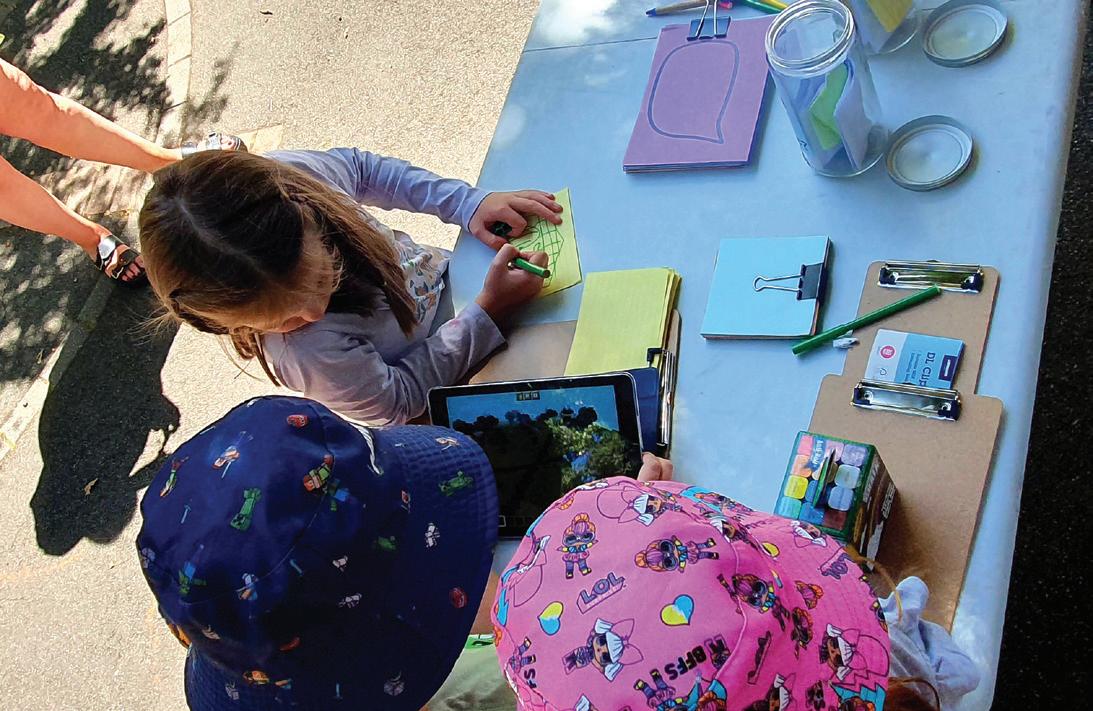
"A great example of this is local resident James Winter, who has a keen interest in architecture and local history," Mr Smith said.
"He's been playing Minecraft since 2012, and building local iconic buildings with a great level of detail since 2021, utilising the Council's publicly available 3D model to help him with building dimensions not accessible from Google Street view.
"We're very impressed with James' efforts and are looking forward to collaborating further with him going forward."
In addition to its educational uses, City of Launceston Mayor Matthew Garwood said the Council's Minecraft maps were proving to be a popular engagement tool attracting the interest of residents of all ages.
"We used our Minecraft maps as part of our recent community engagement pop-up stall in City Park and got a lot of great feedback from kids through to seniors," Mayor Garwood said.
"We absolutely plan to use these at our future pop-ups and school visits, and we're also seeking to capitalise on the engagement through the availability of our Minecraft worlds for anyone to download via the Council's website.
"We're also hoping to incentivise competition by inviting people to share their builds.”
The City of Launceston is so far unaware of other Australian Councils using Minecraft maps in a similar way.

"But we'd be very keen to hear from any Councils or other government organisations who are doing so or are interested in doing so, so we could explore opportunities to collaborate or offer assistance as this has definitely become a passion project for our Council and community," Mayor Garwood said.
The City of Launceston's downloadable Minecraft maps and more information is available here at www.launceston.tas.gov.au/Maps-Apps-and-Data/Minecraft
In each edition of Council Magazine we choose one local government from across Australia to shine a spotlight on. This edition, we focus on the City of Perth and its vibrant nightlife that is bringing together culture, history, entertainment and community under the banner of ‘the City of Light’.







What connects the 1960s, an American astronaut and Western Australia’s capital city?
Way back in 1962, American astronaut John Glenn became the first American to orbit the Earth in the Friendship 7.
Glenn dubbed Perth the ‘City of Light’ after residents turned all their lights on to greet him as his orbit crossed the coastline. After the darkness of the Indian Ocean, the light of Perth made quite the impression on the astronaut – and the rest of the world – and the name has stuck ever since.
Over the years, the City of Light has come to mean many things:
∞ In Nyoongar culture, light is associated with re-birthing and rekindling
∞ Perth is the sunniest capital in Australia, banking an average of 300 days of sunshine a year
∞ Perth is Australia’s most globally connected city, sharing daylight with 60 per cent of the world’s population
∞ The City’s stunning natural surroundings, from beaches, to Kaarta Gar-up (Kings Park) and the Derbarl Yerrigan (Swan River), are strongly connected to the many months of sunshine
These days, the City of Light is also synonymous with entertainment and a vibrant night-time economy featuring world-class bars, restaurants and shopping malls.
Across the year, Perth nights come alive with spectacular drone and light shows, fireworks, Christmas lights and family fun fairs.
This was emphatically highlighted by recent spend and foot traffic data which saw Perth record its biggest festive and summer season ever. Compared with the previous year, the City saw a mammoth 25 per cent increase in visitors and a 19.1 per cent increase in spend to the tune of $400 million.
Embracing the City of Light brand is at the heart of this success, with the City of Perth supporting a year-round events calendar and targeted marketing campaigns that amplify the City of Light as the place to be for residents and visitors.
The summer heat may be fading, but the City’s events calendar is still warming up, taking on new energy across autumn and winter.
There’s something for everyone in the City of Light. Here’s some highlights of what’s to come in 2024.

From 1 to 30 April, the Lotterywest Boorloo Heritage Festival is back to shine a light on the built, natural and cultural heritage of Perth (Boorloo).
This month-long program delves into the City’s remarkable history. With its lively mix of walks, talks, displays, open houses and performances, the festival showcases all the extraordinary people and places that are part of Nyoongar, colonial and multicultural histories.
City of Perth Lord Mayor Basil Zempilas said this year the City was helping to celebrate some significant historic anniversaries, including 125 years of the Perth Mint and 120 years of His Majesty’s Theatre.
“This is the second year the Boorloo Heritage Festival has followed a month-long format. It’s a fantastic opportunity to discover more of our City’s remarkable history,” Lord Mayor Zempilas said.
“There is something for everyone to see and do –from guided walks to open houses, performances and immersive experiences.”
Boasting more than 100 events – most of them free – the Lotterywest Boorloo Heritage Festival is the ideal occasion to come together and look deeper into Perth’s history and culture.
For more information, head to the Visit Perth website.
May is Tree Month in the City of Light, with a series of events that highlight the importance of preserving and increasing our precious tree canopy across the City.
Under its Urban Greening Strategy and Urban Forest Plan, the City of Perth is focused on bringing community groups together to help protect and promote our trees and create a greener future.
Mr Zempilas said the City was committed to increasing Perth’s tree canopy by 30 per cent by 2050.
“During May we’ll be running a series of community planting days and activities to showcase how we can collectively make our City greener and preserve our tree canopy,” Mr Zempilas said.

Everyone can get involved with greening the City. More information and details on how to register for events and workshops throughout Tree Month can be found at Visit Perth.
Uncover the secrets beneath the surface when Lightscape, powered by the City of Light, returns to Kings Park in Perth.
For 40 nights from 7 June, Kings Park will transform into a stunning winter wonderland, thanks to the internationally renowned Lightscape, delivering a world-class spectacle of art, light and sound.
Lord Mayor Zempilas said Lightscape had become a headline attraction on the City’s winter events calendar.
“More than 180,000 people experienced the magic of this incredible event in its inaugural year, and 2024 will offer a totally different but equally fantastic experience, with new installations to be enjoyed across more nights,” Lord Mayor Zempilas said.
“The seven-week festival will celebrate Western Australia’s exceptional local flora, with an added theme around the mysteries of roots which will focus on the secrets beneath the surface.
“With input from local and international artists, the people of Perth and our visitors will experience an immersive, entertaining experience with a uniquely local twist.”
Lightscape is brought to life through a partnership between the Botanic Gardens and Parks Authority and Sony, with the event powered by the City of Perth and supported by Roy Hill.
This August, Plateful Perth is set to turn the City of Light into a gastronomic paradise, injecting bursts of flavour and vibrancy into every corner of the city.
Get ready to indulge in the City's culinary treasures as Perth’s restaurants and bars showcase their talents, offering delicious dishes and exciting dining experiences.
“Prepare your tastebuds for Plateful Perth – a month-long celebration of dining in the City of Light, created for you by the City of Perth,” Lord Mayor Zempilas said.
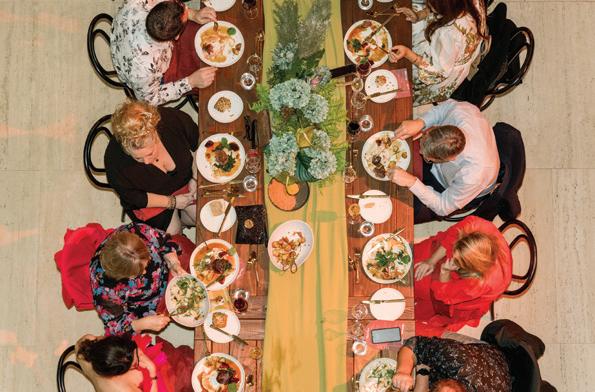
“Plateful Perth isn’t just about tantalising your tastebuds. It’s a series of limited time offers that lead you to discover hidden gems, revisit old favourites, and create lasting memories through the joy of dining. Dining truly comes alive in winter in Perth.”
For more information, head to the Plateful Perth website.
You might be surprised to know the City of Perth is home to one of the largest pieces of vertical art in the world.
Located on the Adnate Hotel, on Hay St, the 25-storey mural is also one of the world’s tallest murals, only just trailing behind the world-record mural in Toronto, Canada.
Painted by artist Matthew Adnate, the artwork tells stories of Perth’s history and diversity, featuring portraits of a Nyoongar man, and an Indian and Mediterranean woman.
You’ll also find captivating artwork scattered around the City’s many streets and laneways, such as the hidden mural that can be found in the Murray Street Mall, which features an expressive rainbow serpent known as the Waargyl.
Designed by a team of cultural artists led by Lance Chadd and Trish Robinson, the Waargyl mural splashes vibrant colour across the wall, telling stories of land-based Aboriginal spirituality and ‘Boorongur lore’, connection and care for Country.
The City’s Light it Up program also adds colour and delight to the streets through a series of unique pieces of local art. The project quite literally shines a light on the quirky laneways and charming heritage buildings which are so unique to the City.
The vibrant installations also improve safety and lighting in otherwise dark laneways – and create safe places for the community to gather and marvel at the beautiful City of Light.
There’s a real art to exploring the creative side of Perth. And you can learn it by connecting with the City of Perth’s iCity Visitor Service. They offer free guided artwork and sculpture tours, perfect for families and those with little ones.
The City of Perth is just one giant art gallery to discover and there’s no time like now to explore.



